#game development courses in india
Explore tagged Tumblr posts
Text
Navigating Animation Course Duration and Fees: What to Expect
Embarking on a journey into the world of animation and visual effects (VFX) is an exciting prospect for many aspiring artists. However, before diving into the realm of creativity, it's essential to understand the intricacies of animation course duration and fees to make an informed decision. Let's explore what to expect when navigating through these aspects, especially with institutions like Alliance University offering comprehensive programs.
Understanding Animation Course Duration:
Animation courses vary in duration depending on the level of study and the depth of the curriculum. At Alliance University, for example, students can opt for Bachelor of Science (BSc) programs in Animation, VFX and Gaming, Bsc Film and tv production, BA Journalism and mass communication. These programs typically span three to four years, providing students with ample time to delve deep into various aspects of animation and VFX.
Factors Influencing Duration:
Several factors influence the duration of animation courses. The depth of the curriculum, the level of specialization, and the inclusion of practical training modules all play a role in determining the course duration. Additionally, institutions may offer flexible scheduling options, allowing students to choose between full-time and part-time study to accommodate their individual needs.
Exploring Animation Course Fees:
When it comes to animation course fees, students can expect variations based on factors such as the reputation of the institution, the level of infrastructure and facilities provided, and the inclusion of additional features like industry collaborations and guest lectures. At Alliance University, the fees for animation courses are competitive, offering students value for their investment.
Budgeting for Animation Education:
While pursuing a career in animation and VFX can be a fulfilling endeavor, it's essential to consider the financial aspect. Prospective students should evaluate their budget and explore options for scholarships, grants, or financial aid offered by institutions like Alliance University. Additionally, some institutions may offer installment plans or flexible payment options to ease the financial burden on students.
Ensuring Return on Investment:
Investing in animation education is an investment in the future. As such, students should ensure that the program they choose offers a robust curriculum, state-of-the-art facilities, and opportunities for practical learning and industry exposure. Institutions like Alliance University prioritize the holistic development of students, preparing them for successful careers in the dynamic field of animation and VFX.
Conclusion:
In conclusion, navigating animation course duration and fees requires careful consideration and planning. By understanding the factors influencing course duration and budgeting for education expenses, aspiring artists can make informed decisions about their future. With institutions like Alliance University offering comprehensive programs and competitive fees, students can embark on a rewarding journey into the world of animation and visual effects with confidence.
#vfx and animation courses in bangalore#gaming and animation courses#vfx course in bangalore#best vfx institute in india#game development courses in india#animation course duration and fees#top animation colleges in india#vfx and animation course fees#game designing colleges in india#best animation institute in bangalore
0 notes
Text
The discussions of elements and factions being 'defanged' in Veilguard alternately annoy and amuse me for two reasons.
One, because this has always been a series about how almost everything and everyone has multiple sides and interpretations depending on who you are, what choices you make, and what your perspective is. Is Loghain a scheming traitor, a ruthless pragmatic doing what he believed was necessary to save his country, or a misunderstood hero unfairly condemned by the ignorant masses? Is the Qun tyrannical, or exactly what the people who choose to live under it need? Is Solas a rebellious hero, a traitorous trickster god, or a tragic victim? Is that woman Flemeth, Mythal, Tyrdda Bright-Axe or even Adraste?
It all depends on who you ask when. So of course you're seeing the Crows in a positive light -- circumstances position them as freedom fighters against the Antaam invasion, and for one of your teammates they're literally family. And even then they're still as strongly coded with mafia tropes as Neve is a noir detective. And of course you need to go poking around before you find the pile of dead bodies the Lords of Fortune are hiding behind their fighting ring. Pirates are all about branding, and Isabella's branding is clearly inclusion and good times; they keep the unpleasantness under the rug.
The second reason this amuses/annoys/interests me is it reminds me of Pathfinder. The Pathfinder Roleplaying Game came out in 2009, just like DA Origins, and like DA its setting tried to distinguish itself with "real-world" grit and grittiness. Slavery. Racial tensions. Religious persecution. Mass slaughter. Infestation and disease. Plus the occasional demonic invasion and a shitton of dragons.
But it's been 15 years since then, we live in a post-HBO's Game of Thrones world, and both sides of the game industry have made deliberate efforts to become more diverse. Some of those changes came with discussions to readdress and reconsider the nature of dark fantasy and whether it really needs to be a parade of potentially exploitive human misery.
So I know for a fact that Paizo's made deliberate efforts to pull back on some of those aspects to make things more welcoming for a diverse player base, doing things like outlawing slavery across the entire setting, reinterpreting 'evil' ancrestries like orcs and goblins into fully-developed cultures, and giving the exoticized "fantasy Asia/Africa/India/Americas" setting new, in-depth and cultural respectful re-examinations.
And people bitch about that, too.
So my read is Bioware's doing the same thing for similar reasons, and personally, I like it. Is it perfect? No of course not but we all know what a nightmare this game's development was. They did good with what they had.
#dragon age veilguard#pathfinder#veilguard spoilers#I've been marathoning the game all weekend#finally beat my first playthrough! and I immediately started a second#so call that a ringing endorsement
28 notes
·
View notes
Text
What perfumes do the HL boys wear, by a complete perfume lover who is not an expert.
Hello there. I have been inactive for too long. Ever since my label as a scent witch by @pandanscafanfiction and being bullied by @tennoujinerin to post this, here it is. What perfumes I think the HL boys would wear:
I know I have done this before but after some revision and seeing how each character has been developed, lo and behold my new choices.

Sebastian Sallow:
Ah, the one who stole our hearts at first when we played the game. I chose Cedarwood as his main scent note for it's association with healing and death. Sebastian is an all rounder, not the type to have multiple bottles, one scent will do the job. Burberry's Hero, YSL's La Nuit De La Homme and Margiela Replica's Whispers in the Library (I chose this on purpose) have Cedarwood as it's note
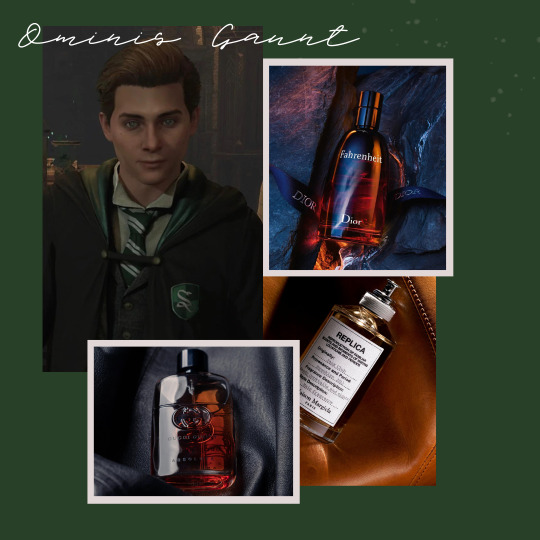
Ominis Gaunt:
Ominis is upper class but it doesn't strike me as someone who wants to shout his status. It is a kind of scent that is subtle but you know it comes from the upper class. For that I chose Leather fragrances as it usually wears slowly on the skin, but on the right person it comes across as a quiet strong person. Gucci's Guilty Absolute, Dior's Fahrenheit and Margiela Replica's Jazz club are a great reflection of this.

Garreth Weasley:
As a potioneer who relies on his nose a lot, Garreth wouldn't see the point of wearing perfume. At best he would just need something that smells clean and fresh, but I added some citrusy notes for his fun loving nature. For that Chanel's Allure Homme Sport and Dior Homme Cologne would do the trick. To get is attention, choose a scent that sits close to the skin in an almost intimate level that would turn his head, such as Margiela Replica's Lazy Sunday Morning.

Leander Prewett:
For Leander I actually went for "Annoying" fragrances at first but seeing how he has been developed into the fandom, I rearranged for scents that are fresh with a twist. I wanted something that comes across as a people pleaser but there is the note that you can't put your nose to it (It's Rosemary) that makes you take a second sniff. For that, Armani's Aqua Di Gio Porfumo, Bvlgari's Aqva pour Homme and Issey Miyake's Fusion d'Issey are my picks.
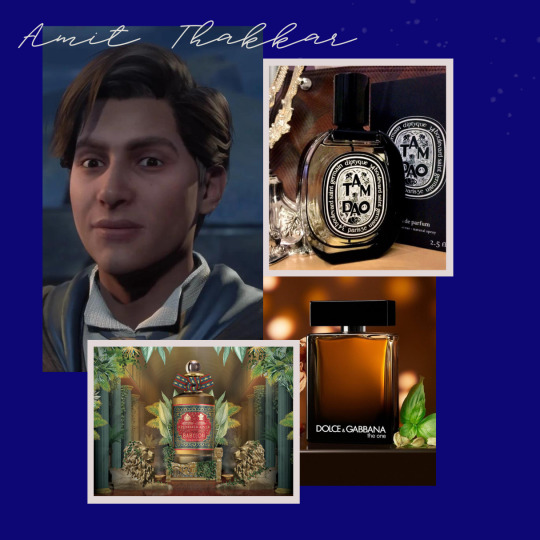
Amit Thakkar:
I really wanted to pay homage to India for Amit, as India is the land where scents are used quite frequently in daily life. I chose a sandalwood perfume (Diptyque's Tam Dao) for it's usage in the worship of the Hindu Gods and Goddess, Cardamom (D&G The One) for it's usage in food and Saffron ( Penhaligon's Babylon) for the colour worn by Hindu Priests ( it symbolic of Sunsets/Sunrise and healing, apparently).

Andrew Larson:
I am amazed at the headcanons for Andrew but I digress he doesn't smell like herbs. Instead I chose Juniper Berries! Is this an odd choice? Of course, but considering it's freshness yet spicy notes with medicinal properties (not to mention it being found in most parts of the globe) it is a timeless scent. I tried my best to find scents that are light, something not too strong as it will need to sit close to the skin. Take a peek with Blvgari's Glacial Essence, Gucci's Guilty Cologne Pour Homme and Penhaligon's Juniper Sling.
#hogwarts legacy#hogwarts legacy characters#ominis gaunt#sebastian sallow#amit thakkar#garreth weasley#leander prewett#hogwarts legacy headcanons#andrew larson
104 notes
·
View notes
Note
Thinking about your "Rachel bashing og greek myths" post, methinks she believed herself to be making greek culture a favor similarly to the author of The Phantom of Manhattan, the unofficial sequel to The Phantom of the Opera
In the preface, the author begins by saying that Phantom, unlike Frankenstein or Dracula, barely made a dent in world culture until Andrew Lloyd Webber came along to make the musical, which he considers the "true" version even tho like...it wouldn't exist without the novel! He bashes Gaston Leroux and basically states that his attempt at writing failed miserably and it's like DUDE, again, the musical and your problematic sequel wouldn't even exist without it, and just because it was bigger in France than in the usa it doesn't mean it had zero impact in culture
But of COURSE unless it's usa-approved then it doesn't count and isn't worth anything *sarcasm*
PHENOMENAL point, FANTASTIC point, absolutely true and correct
i can't be a total dick and say this is an issue solely created and implemented by rachel, because we've seen non-western cultures and religions absolutely whitewashed to hell and back - like, people have been drawing jesus of the bible as white for centuries when he was a middle eastern palestinian jewish man, and good god look what the west has done to the religions of india, china, and japan. but it's the way these kinds of stories drip with a sort of smugness in removing the original culture, in depicting it as backwards and broken.
rachel wants to claim she's making a feminist retelling, but the original myth was already feminist. ancient greece didn't pretend their society was not fiercely male dominated and patriarchal, and hades stealing persephone was absolutely in line with the traditional myths - the twist is that demeter wins. demeter punishes the male gods who stole her daughter, and the ferocity of her rage and grief forces hades and zeus to give in. if persephone hadn't eaten the pomegrante seeds, she wouldn't be in the underworld at all! this is a story that is so clearly a triumph for the mothers and daughters of ancient greece, of many worlds over, because it depicted explicitly that a mother's love was more powerful than even the gods. and rachel pisses all over that.
literally even going beyond that, looking at the society that is olympus and the underworld - all the technology they use, all the innovations they have. who exactly is making these??? where exactly is the material coming from??? you can handwave away most of the inventions by saying it's magic, but we've seen demeter talk about algebra, which was invented in the ninth century by a muslim scholar from persia. in speedrunning to this so called perfect modernized world, rachel actually erases the cultural offerings and developments of dozens of other ancient worlds, and kind of just gives the credit to the underworld, which is run by a slave driver.
persephone constantly bemoans the dullness of the mortal realm, and prefers to literally lounge around doing nothing, when the mortal realm is inventing the olympic games, the democratic forum, FOOTBALL. you have thousands of things to show the gods involved in - largely because the gods were the patrons!!! why do we never see zeus looking over the olympic games??? they happen in his sanctuary!!!
like the disdain rachel has for ancient greece is insane. she can't even bother to research the food typical of the time period, seeing as she writes persephone being looked down on for being vegetarian when vegetables were a key and staple diet of ancient greece. one could argue that a vast majority of ancient greece were vegetarian by general habit. she's baking cheesecake and french desserts and having fast food and carrot cake and maybe - maybe - she'll mention baklava. the ancient greeks are FAMOUS for their art, but we sure wouldn't know that from lore olympus. the only character who even references ancient greek music is apollo, with his lyre, and that's not exactly a ringing endorsement.
and this is not to say that an adaption has to follow the ancient text to a t - that's just not feasible and no one is expected to do so. but there's really something to how rachel does dismiss or ignore the canonical importance of so many of these stories to replace them with a western interpretation. even the therapy speak is grating. in episode 227, when persephone is talking about the concept of virginity, she's absolutely correct in pointing out how that's largely a social construct - but in light of the world she lives in and the world she helps control, the same idea could have been reached through means other than americanized psych talk.
so often, people will look back at the ancient world and think we are morally superior because we do not have the same views, or we have seemingly "developed." that is a view i abhor, because it removes the very act of learning and developing and understanding. rachel really talked big about how removing the incest of ancient greece made the story better, but incidentally, she managed to also take out the feminism, and literally the entire lgbt culture of ancient greece. apollo was even considered the patron of homosexuality! he was called to bless same-sex unions! zeus had DOZENS of male lovers; ares, hephestus, and hermes had known male relationships, and several of the ancient heroes and gods of greek mythology were described in terms we would refer to as transgender in modern times.
if rachel had gone "i'm writing a love story that's originally inspired by the myth of persephone and hades but it's very much modern and removed from the myths" that would be one thing, and i would not be bristling at that; myths have inspired countless stories over the centuries and will continue to do so for centuries to come. the problem is rachel wants to claim a rooting in these myths with zero understanding of how they work or why they work, and absolutely lets her contempt for the ancients shine through in every single aspect of her comic. it's gross and it's petty and she deserves none of the self-appointed "mythology expert" she's given herself.
#answered#anti lo#anti lore olympus#oh this is so long im so sorry anon i got heated lmao#me adding yet another run on sentence: AND ANOTHER THING -#i basically crammed six different essays in this reply anon forgive me i am so sorry#me going back to proofread this now that i'm slightly calmer: why did i use so many fucking commas
44 notes
·
View notes
Text
The contradictions of China-bashing in the United States begin with how often it is flat-out untrue.
The Wall Street Journal reports that the “Chinese spy” balloon that President Joe Biden shot down with immense patriotic fanfare in February did not in fact transmit pictures or anything else to China.
White House economists have been trying to excuse persistent US inflation saying it is a global problem and inflation is worse elsewhere in the world. China’s inflation rate is 0.7% year on year.
Financial media outlets stress how China’s GDP growth rate is lower than it used to be. China now estimates that its 2023 GDP growth will be 5-5.5%. Estimates for the US GDP growth rate in 2023, meanwhile, vacillate around 1-2%.
China-bashing has intensified into denial and self-delusion – it is akin to pretending that the United States did not lose wars in Vietnam, Afghanistan, Iraq and more.
The BRICS coalition (China and its allies) now has a significantly larger global economic footprint (higher total GDP) than the Group of Seven (the United States and its allies).
China is outgrowing the rest of the world in research and development expenditures.
The American empire (like its foundation, American capitalism) is not the dominating global force it once was right after World War II. The empire and the economy have shrunk in size, power and influence considerably since then. And they continue to do so.
Putting that genie back into the bottle is a battle against history that the United States is not likely to win.
The Russia delusion
Denial and self-delusion about the changing world economy have led to major strategic mistakes. US leaders predicted before and shortly after February 2022, when the Ukraine war began, for example, that Russia’s economy would crash from the effects of the “greatest of all sanctions,” led by the United States. Some US leaders still believe that the crash will take place (publicly, if not privately) despite there being no such indication.
Such predictions badly miscalculated the economic strength and potential of Russia’s allies in the BRICS. Led by China and India, the BRICS nations responded to Russia’s need for buyers of its oil and gas.
The United States made its European allies cut off purchasing Russian oil and gas as part of the sanctions war against the Kremlin over Ukraine. However, US pressure tactics used on China, India, and many other nations (inside and outside BRICS) likewise to stop buying Russian exports failed. They not only purchased oil and gas from Russia but then also re-exported some of it to European nations.
World power configurations had followed the changes in the world economy at the expense of the US position.
The military delusion
War games with allies, threats from US officials, and US warships off China’s coast may delude some to imagine that these moves intimidate China. The reality is that the military disparity between China and the United States is smaller now than it has ever been in modern China’s history.
China’s military alliances are the strongest they have ever been. Intimidation that did not work from the time of the Korean War and since then will certainly not be effective now.
Former president Donald Trump’s tariff and trade wars were meang, US officials said, to persuade China to change its “authoritarian” economic system. If so, that aim was not achieved. The United States simply lacks the power to force the matter.
American polls suggest that media outlets have been successful in a) portraying China’s advances economically and technologically as a threat, and b) using that threat to lobby against regulations of US high-tech industries.
The tech delusion
Of course, business opposition to government regulation predates China’s emergence. However, encouraging hostility toward China provides convenient additional cover for all sorts of business interests.
China’s technological challenge flows from and depends on a massive educational effort based on training far more STEM (science, technology, engineering and mathematics) students than the United States does. Yet US business does not support paying taxes to fund education equivalently.
The reporting by the media on this issue rarely covers that obvious contradiction and politicians mostly avoid it as dangerous to their electoral prospects.
Scapegoating China joins with scapegoating immigrants, BIPOCs (black and Indigenous people of color), and many of the other usual targets.
The broader decline of the US empire and capitalist economic system confronts the nation with the stark question: Whose standard of living will bear the burden of the impact of this decline? The answer to that question has been crystal clear: The US government will pursue austerity policies (cut vital public services) and will allow price inflation and then rising interest rates that reduce living standards and jobs.
Coming on top of 2020’s combined economic crash and Covid-19 pandemic, the middle- and-lower-income majority have so far borne most of the cost of the United States’ decline. That has been the pattern followed by declining empires throughout human history: Those who control wealth and power are best positioned to offload the costs of decline on to the general population.
The real sufferings of that population cause vulnerability to the political agendas of demagogues. They offer scapegoats to offset popular upset, bitterness and anger.
Leading capitalists and the politicians they own welcome or tolerate scapegoating as a distraction from those leaders’ responsibilities for mass suffering. Demagogic leaders scapegoat old and new targets: immigrants, BIPOCs, women, socialists, liberals, minorities of various kinds, and foreign threats.
The scapegoating usually does little more than hurt its intended victims. Its failure to solve any real problem keeps that problem alive and available for demagogues to exploit at a later stage (at least until scapegoating’s victims resist enough to end it).
The contradictions of scapegoating include the dangerous risk that it overflows its original purposes and causes capitalism more problems than it relieves.
If anti-immigrant agitation actually slows or stops immigration (as has happened recently in the United States), domestic labor shortages may appear or worsen, which may drive up wages, and thereby hurt profits.
If racism similarly leads to disruptive civil disturbances (as has happened recently in France), profits may be depressed.
If China-bashing leads the United States and Beijing to move further against US businesses investing in and trading with China, that could prove very costly to the US economy. That this may happen now is a dangerous consequence of China-bashing.
Working together (briefly)
Because they believed it would be in the US interest, then-president Richard Nixon resumed diplomatic and other relations with Beijing during his 1972 trip to the country. Chinese chairman Mao Zedong, premier Zhou Enlai, and Nixon started a period of economic growth, trade, investment and prosperity for both China and the United States.
The success of that period prompted China to seek to continue it. That same success prompted the United States in recent years to change its attitude and policies. More accurately, that success prompted US political leaders like Trump and Biden to now perceive China as the enemy whose economic development represents a threat. They demonize the Beijing leadership accordingly.
The majority of US mega-corporations disagree. They profited mightily from their access to the Chinese labor force and the rapidly growing Chinese market since the 1980s. That was a large part of what they meant when they celebrated “neoliberal globalization.” A significant part of the US business community, however, wants continued access to China.
The fight inside the United States now pits major parts of the US business community against Biden and his equally “neoconservative” foreign-policy advisers. The outcome of that fight depends on domestic economic conditions, the presidential election campaign, and the political fallout of the Ukraine war as well the ongoing twists and turns of the China-US relations.
The outcome also depends on how the masses of Chinese and US people understand and intervene in relations between these two countries. Will they see through the contradictions of China-bashing to prevent war, seek mutual accommodation, and thereby rebuild a new version of the joint prosperity that existed before Trump and Biden?
This article was produced by Economy for All, a project of the Independent Media Institute, which provided it to Asia Times.
123 notes
·
View notes
Text
I made a discovery/theory that I thought I might share in case it's of use or interest to anyone else!
How big is Valisthea?
TL;DR - It's just Scotland, Cymru (Wales), Ireland, and England but flipped upside-down and photo bashed a bit.
These are just purely my observations, so I'm throwing them into the void!
So, for fan fiction purposes (and just general peace of mind), I really wanted to figure out exactly how big the twins were, considering how insanely quick everyone moves around. This is obviously true for video games in general but I felt it a lot more in FFXVI than other comparable games imo.
There's not a ton to go off of, just some throwaway dialogue lines here and there that give you the general sense that you can move from one location to the next in a day or two primarily by foot (chocobos are a whole other side tangent, as is the Enterprise or whatever the hell Dominants are capable of).
Some of those specific references include;
The trip from Rosalith to Pheonix Gate and back taking an expected 5 days total (with Clive, Tyler, and Wade arriving that night despite the detour through the marshes),
The boat ride from Port Isolde to Drake's Breath taking 3 days,
Someone from the hideaway referencing that they leave for Lostwing each day for work. (Couldn't find the exact example don't quote me on that one.)
Twinsides/Origin being "Hundreds of Leagues" away from The Hideaway
There's probably a few others, but most of the other examples I could find were open to interpretation, merely implying that travel took place in the same day but could be interpreted to have been spread out over longer were it not for 'video game logic and scale'.
That being said, I like things being a little more grounded for head canon purposes and wanted to know how much down time was reasonable in and between trips back and forth.
In general, I feel like the game should have been spread out over the full 5 years. But understanding game development limits, I get why that'd have been a nightmare! So the time skip makes sense practically, and I just choose to headcanon that events are a little more spread out. (Like them taking the full year in 873, from Clive and Jills rescue to destroying Drakes Head, rather than a couple of weeks like it seems in game.)
Shout out to this reddit post for doing an awesome estimate based on an average measure of the aforementioned "hundreds of leagues" quote. This was my starting point.
They concluded that Valisthea was likely closer in size to India or Australia, which I like a lot in terms of Valisthea being a full-scale continent. However, it does mess with the timeline a lot.
Also, I'm from a large country so my sense of what is a "reasonable" distance is pretty thrown off compared to a lot of other places. A 2-5 hour (200-400km) car ride to another city is nothing in my head until you realize that distance would take 1-4 weeks to walk or even ride (Horse metrics. Again chocobos are weird and probably a bit faster due to being all terrain and more robust than horses but are also birds so I don't know what endurance levels carrying heavy loads would be like).
Soooo, I began looking for European contemporaries since the game is very eurocentric (and all the criticisms that come with that).
Which led me to the realization that Valisthea is literally just the UK and Ireland, but flipped.
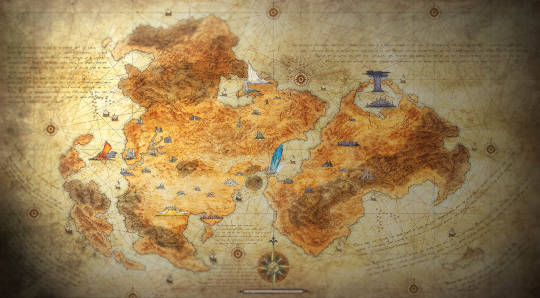
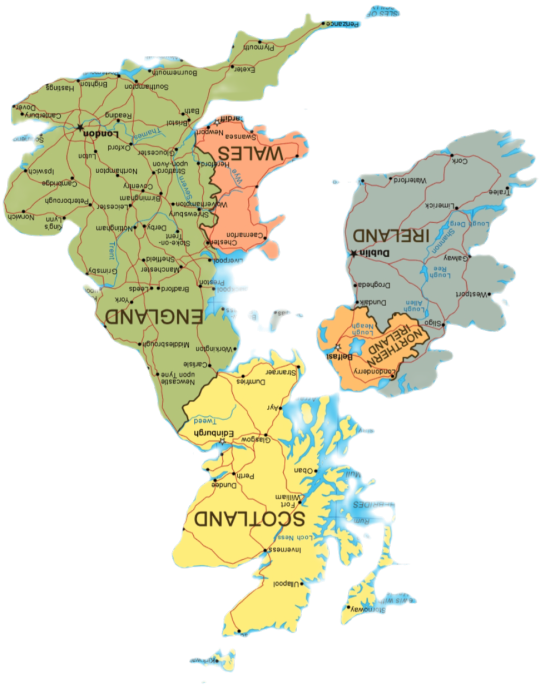
Now. Am I 100% certain this is what the devs did? Of course not. Is it so damn close that I'm 99.9% certain? Yes. Storm is Britain, and Cymru. The Northern Kingdom and the Iron Kingdom are Scotland but broken up. And Ash is Ireland and Northern Ireland.
Major cities or points of interest all have approximate real-world contemporaries and even follow geographical features on the map in that there are matching rivers, topography and even highways.
The biggest giveaway to me was Pheonix Gate just literally being London, as well as Norvant Valley matching exactly in shape with an upside down Bristol Channel (which would put Caer Norvent in Swansea). Even The Greatwood lines up relative to a major national park (forgive me UK peeps, it's hard to tell from a map alone if that's all one giant forest or several parks smooshed together).
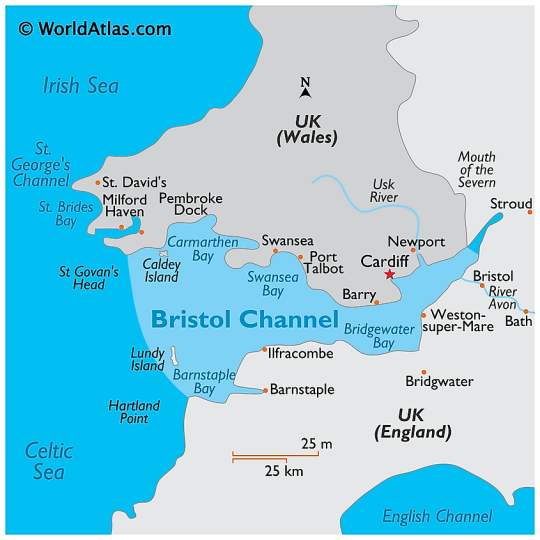
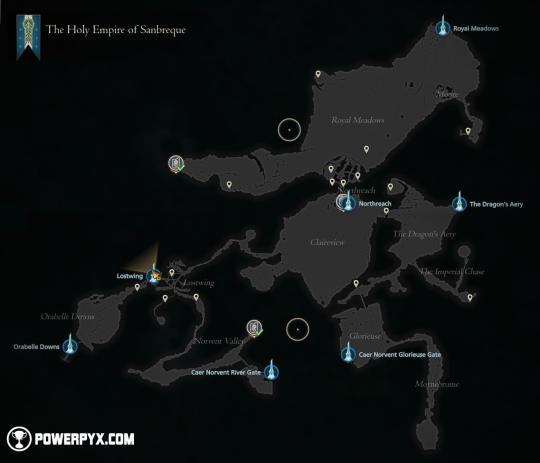
So, if we're working off that assessment, with the quote from Tomes where he mentions that Valisthea is a small continent, then the time/distance ratio makes a lot more sense!
Of course, by our world standards – the UK alone does not a continent make.
But I'm honestly ok with that? I'd rather the land mass be small to match the timeline rather than warp the timeline to match the land mass.
So, here's a list of some of my estimated real-world contemporaries for all major landmarks on the Valisthean Map. Of course, they don't line up 1-1, and are not at all reflective of the locations themselves. It's all just for a relative sense of scale.
Rosaria;
Martha's Rest - Oxford
Eastpool - Reading
Pheonix Gate - London
Rosalith - Cambridge
Port Isolde - Peterborough (ignoring that it's not on the coast)
Deadlands
Cid's Hideaway - Stratford-Upon-Avon
Clive's Hideaway - Birmingham
Sanbreque;
Lostwing - Tauton
Caer Norvent - Swansea
Northreach - Exeter
Oriflamme - Kingsbridge
Kingsfall - Salisbury
Dhalmekian Republic;
Kostnice - Leicester
Drake's Fang - Sheffield
Dhalamil - Derby
Dravozd - Wolverhampton
Tabor - Shrewsbury
Boklad - Lampeter
Ran'Dallah- Tregaron
Waloed;
Shadow Coast - Belfast
Eistla - Kinnegad
Edge of Infinity - Westport
Ravenwit Walls - Wenagh
Stonhyrr - Cork
Other;
Twinsides - Fishguard
Kanvar - Chester
Drake's Breath - Ipswich
Dzemekys - Aberystwyth
Going off of those locations, I was able to get the rough time/distance of certain trips (using google maps metrics in pure walking hours not how long it took them because of *variables*)
Routes;
Rosalith to Pheonix Gate: 86km, 20hrs
Hideaway to Pheonix Gate: 172km, 39hrs (to Martha's Rest: 67km, 15hrs; +Eastpool: 41km, 9hrs; then to Pheonix Gate: 64km, 15hrs)
Hideaway to Oriflamme: 295km, 68hrs (Hideaway to Lostwing: 184km, 43hrs. What shortcut Cid?? +Northreach: 48km, 11hrs; +Oriflamme: 63km, 14hrs)
Lostwing to Caer Norvent: 199km, 46hrs (Benedika and Co were at that fort for days, not hours. Also, how hard did Cid knock Clive out if it took more than a week to get back to the Hideaway after the Garuda Fight?)
Shadow Coast to Stonhyrr: 755km, 171hrs. (Shadow Coast to Eistla: 169km, 38hrs; +Edge of Infinity and back: 181km, 41hrs x2; +Stonhyrr: 224km, 51hrs) meaning crew were gone in Waleod for WEEKS.)
So, all in all a bit longer than in seems in game but still well within range given that they probably shaved off arbitrary travel days for narrative flow.
That being said, I love the potential of more "down time" moments. And it really shows just how often/long everyone would be gone from the Hideaway at any given moment.
It puts into perspective Gav's side quest, "You keep sending me wherever you need to, I'll keep going. Safe in the knowledge that I'll have a home to come back to." And how they all remark that they never seen each other, or how much their trips away together were really meaningful.
(Also kinda excuses the fact it took Clive and Jill 5 freaking years to get together. They were too busy walking everywhere!)
Is it possible to just pop down to Martha's for a quick supply run? Yes. But unless you're on a chocobo, you're camping out at Three Reeds then staying the night at the Inn before heading back. It's more of a 4-7 day trip rather than an afternoon and back.
Anyhow, I hope this all makes sense!
Now, time to go write about Clive/Cid camping overnight in the Greatwood together on Clive's first real night of freedom. 😭😭😭
14 notes
·
View notes
Photo
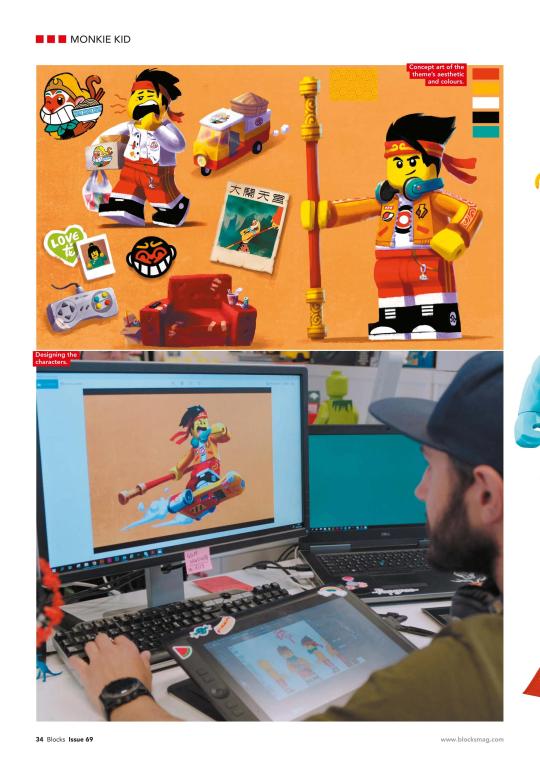

ISSUE 69 BLOCKS MAGAZINE PAGE 35 + 36
[ID 1: Two magazine pages. The first shows several pieces of digitally painted concept art of; MK, a roughed-up couch, a game controller, a polaroid of an early design of Mei, and another polaroid of Monkey King from the film “Havoc in Heaven”. Below it is an image of a LEGO designer referencing a piece of concept art, one of MK flying on a hoverboard, to design MK’s minifigure, which is being drawn on his tablet. ]
[ID 2: On the left, between the text, minifigures of MK, Mei, Sandy, Pigsy, and Monkey King descend vertically. On the right is an ink sketch of Monkey King, who wears a crescent fillet and has a large forehead. He sits atop his cloud, below him is an early version of MK, who has a skateboard, spiky black hair, and a shirt with a star on it. Next to this image is a digital painting of Monkey King, who closely resembles his minifigure but has a full cape and golden sleeves. Under this is a picture of Monkey King’s minifigure, who stands on a LEGO cloud and wields his staff.]
Transcript:
The Characters
MK Monkie Kid, the theme's titular character, Is chosen by the Monkey King to be his successor and defend against the Demon Bull. He's a brand new character in the story.
ΜΕΙ Mei is part of the Dragon Family, a descendant of the legendary White Dragon Horse, which the monk Tang Sanzang rode down the Silk Road on his epic pilgrimage to India and Central Asia.
SANDY Once a soldier, Sandy is now a relaxed, tea drinking nature lover. He's based on the character of Sha Wujing. the most kind-hearted, loyal and logical of Tang Sanzang's three disciples.
PIGSY Head Chef of Pigsy's Noodle Shop, the character takes a great deal of pride in his kitchen. He's based on Zhu Bajie, a part-human, part-pig monster who embodies the sins of sloth, gluttony and lust in the original story.
MONKEY KING After vanishing centuries earlier on a magical cloud, Monkey King is back to train the Monkie Kid. He's based on Sun Wukong, who like Sha Wujing and Zhu Bajie was forced to accompany Tang Sanzang on his quest by the goddess of mercy.
Developing Monkie Kid
It wasn't just name recognition that the Monkey King story enjoyed: it was also ripe for a LEGO adaptation. 'I knew something about the Monkey King and Journey to the West because key beats from that story have been reinterpreted in Hollywood so many times,' Simon says. 'When we were discussing retelling it, we were just listing out the big, iconic aspects.'
The biggest of all is of course the Monkey King himself. 'The Monkey King is such an amazing superhero because he can transform himself into so many different things. He can fly on a magic cloud, he's slightly cheeky, he slightly breaks the rules and he's not perfect. He's got that likable character; he's not the typical square-jawed hero that's just going to save the day.
'The team in China started saying, 'There's the Bull Demon and he has a wife that has this huge fan that creates tornadoes, and a son who can control fire, then all the other demons like the Spider Queen...' You just think wow, these demons are awesome and we can bring them to life in brand new ways.'
That early meeting set so much direction for the theme - not just for the villains, but also for the title. As with all great moments of invention, though, no one person can claim the credit. 'I wish I could remember who it was, but somebody said, 'It's the next generation of the Monkey King and he's just a boy,' and somebody said, 'The Monkie Kid.' That was the spark moment.'
Testing proved that children could identify with the Monkie Kid, or MK as he is also known, seeing the possibility that they could be the Chosen One.
Returning to Billund in September 2018, it was time to present the concept. 'We had a 'portfolio gate' as we call it at LEGO, which is where the senior team meets and we have to pitch what we have been working on, and get their approval to move forward. Everyone was like, 'Wow!' and the China team supported it 1000% - they gave us the green light to move forward and we went into the full development phase of sculpting new characters and building models.'
"HOW CAN WE MAKE SURE WE AREN'T JUST SPRINKLING A LITTLE BIT OF CULTURAL DUST ON TOP?"
#LEGO Monkie Kid#lmk mk#qi xiaotian#mei monkie kid#long xiaojiao#sandy monkie kid#sha dali#pigsy monkie kid#zhu da chu#monkey king#concept art#blocks magazine#mmb.png
76 notes
·
View notes
Text
While India’s Bharatiya Janata Party and Prime Minister Narendra Modi appear poised to return to power for a third consecutive term—a feat accomplished by a premier only once before in the country’s history—they are much diminished, having failed to secure a parliamentary majority on their own. In his 10 years in power, Modi has never had to rely on coalition partners. The election marks not only the end of single-party control in the Indian Parliament but also the BJP’s having peaked. Coalition governments—the natural order for India’s democracy since the late 1980s, except for the past decade—are back to stay.
The BJP’s supremacy over the past decade was the result of several factors. In Modi, the party had a once-in-a-generation leader whose charisma and communication abilities placed him head and shoulders above the competition in terms of popularity among voters. Religious appeals, welfare programs (especially those aimed at women and the poor), and organizational capabilities that gave the party a superior ground game all helped. So did a ruthlessness in deploying the dark arts of politics, a disunited and weak opposition, and access to oodles of campaign finance.
The BJP’s manifest hegemony appeared to presage its continued dominance of the Indian political landscape well into the future. But from the summit, the only way is down. Of course, the party may stay near its peak for a while and climb down slowly—but that is not a matter of if, but when.
Although robust political competition is a hallmark of democracies, a surprisingly large number have been dominated by a single political party for long periods of time. Examples include Japan’s Liberal Democratic Party, the Christian Democrats in Italy, the Institutional Revolutionary Party (PRI) in Mexico, and the Democratic Party in Botswana. India itself was dominated by the Indian National Congress party for many decades, and the communist Left Front ran the state of West Bengal unchallenged for three-and-half decades.
When in power, these dominant parties seemed unassailable—until they were not. In some cases, this happened when economic development and technological change altered the structure of the economy and the relative power of different social groups. The green revolution in India, for example, empowered farmers from middle castes who had long been excluded from the Congress party’s social coalition. Their economic ascendency translated into political power that pushed out the Congress in populous North Indian states. The shift from manufacturing to services and the concomitant decline of unions also undermined a major social base of the dominant left-of-center parties.
In many postcolonial states, the party that led the country to independence enjoyed a special legitimacy. But with each successive generation, societal memories of epochal historical events faded. It took seven decades with the PRI in Mexico and three decades with the African National Congress in South Africa (as last week’s election results demonstrate). India’s Congress party played a pivotal role in the nation’s freedom struggle, but while the halo effect persisted for decades, it inevitably dimmed.
Dominant parties can also fade because of national crises driven by international events—such as an economic shock or a defeat in wars. But for many of them, the longer that they are in power, the more that institutional sclerosis sets in. Call it the law of political entropy. As the French political scientist Maurice Duverger put it in the 1960s, the dominant party “wears itself out in office, it loses its vigor, its arteries harden. … Every domination bears within itself the seeds of its own destruction.”
The longer that the BJP was in power, the more that those seeds sprouted within the party. The BJP’s singular strength has been its leader, Narendra Modi. The Congress party also had such a leader in Indira Gandhi, who—like Modi—towered above her contemporaries. The popularity of both leaders far outweighed that of their parties.
But that very strength became their Achilles’ heel as a personality-driven style of party and politics emerged. For the BJP, increasing centralization, declining intraparty democracy, and the cutting-to-size of regional leaders who were not subserviently loyal to national the leader all took their toll. Efforts to engineer defections from opposition parties (through both blandishments and coercion) meant that gradually, the party became a magnet for opportunists rather than those with deep ideological commitments.
Under Modi’s rule, such coercion often took the form of dropping corruption cases against opposition party members who defected to the BJP. But this did not mean that the defectors became less corrupt; a leopard doesn’t change its spots. There’s little wonder, then, that even though the BJP had ridden an anti-corruption wave to power in 2014, preelection polls published in April this year found that more than half of respondents (55 percent) believed that corruption had increased in the past five years. Committed party workers have begun to lose interest as party hoppers brought in for short-term gains crowd them out in coveted positions. A favorite goal of the BJP’s leadership was to create a Congress mukt Bharat (“An India free of the Congress”). Ironically, in attempting to do so, the BJP became the embodiment of that very Congress culture.
If the art of victory is learned in defeat, for the BJP, the opposite is proving true. Each new victory brought a validation of the party’s strategies, whether muzzling critics, coercing opponents, or marginalizing religious minorities. The premium on loyalty increased, and voices of dissent become more quiescent. The initial self-confidence that allowed for risk-taking became an overconfidence spilling over to reckless behavior—exemplified by allegations of India’s intelligence agencies seeking to silence overseas critics in Canada and the United States.
The arrogance meant that the party overlooked three countervailing forces.
First, the manifest reality that no party in India wins with a majority of the votes. For a party to win in India’s first-past-the-post system, it needs a plurality of votes—which requires a fragmented opposition. The more hegemonic that the BJP became, the more authoritarian that it became, putting pressure on opposition parties and their leaders. But instead of weakening them, it brought them together. Nothing concentrates the mind like a fight for survival, and, while imperfect and incomplete, the opposition’s decision to join forces in the so-called INDIA coalition limited vote fragmentation.
Second, while successful political parties embody a set of ideas and ideologies that are yoked to policies and programs, all ideas have their life cycles. Postwar Keynesianism had its day for a quarter-century, and neoliberalism subsequently had its own for about three decades. Both are passé today. Political Islam rode high for around three decades after the Iranian revolution, but its energies have since flagged. In India, the secular socialist idea had a run for nearly a half-century, but its increasing opportunism tripped it up, and it was gradually pushed out as the BJP tapped into the plentiful waters of the anxieties and resentments of the Hindu majority.
But the Hindutva ideology has its limits, too. Even though the BJP did deliver on its promise on constructing a Ram temple on the site of a historic mosque, the expected political payoffs did not materialize. In this election, the BJP failed to win even the constituency where the temple was built. Populism can—and does—secure votes for a while. But India’s complex social mosaic cannot be easily pigeonholed into binary categories.
Third, ideologies do not address the quotidian challenges facing voters. The wellsprings of voter discontent run deep, and addressing them is—and will be—difficult.
The foremost challenge is the economy, which has simply been unable to supply decent jobs in adequate numbers. More and more Indians have formal education credentials but meager skills, a sad testimony to the poor quality of the country’s education system. Rising aspirations are hitting the brick wall of precarious jobs as India continues to struggle to strengthen its manufacturing sector. At some point, the millions of disgruntled youths will find ways to voice their frustrations.
These challenges will be greater given the extraordinary technological changes that are upending labor markets—not just in manufacturing, but also the tech services that have been India’s one categorical success. Even robust growth is unlikely to produce the sort of labor demand that one might have expected in the past. And a febrile politics will be rocked even more in the future, as technological change in the form of artificial intelligence is poised to further political turmoil. Managing this will be hard in the best of circumstances. In a polity where polarization is actively encouraged, it’s hard to be sanguine about where this may lead.
India’s election was held under a searing heat wave, a vivid reminder of the inexorable impacts of climate change, whose afflictions are mounting. Indian agriculture is particularly vulnerable as temperatures climb and rainfall patterns change. A bedraggled urban India will face further pressures as the recent water shortages in India’s booming information technology capital, Bengaluru, illustrate. And this is just the beginning.
These are all exceedingly difficult challenges no matter which political party is in power in India. But for now, the one silver lining is that while commentators and experts have been deeply apprehensive about India’s democracy, its voters clearly seem to be less so. Just ask the BJP.
6 notes
·
View notes
Note
[Huey Zoomer Anon]
Fine I’ll make “barely disguised by make the radicals begrudgingly acknowledge it they want to disapprove it!” inspired fantasy character of the Mughal emperor
I not even getting into the “Boy harems” the Mughal nobels have…
Anyways, as you mention before now people who supposedly have degrees in psychology have WORST understanding than me. And I got a disorder that people seemingly believe I am incapable of having empathy
My brother in Christ I try to be kind and compassionate to npcs in Rated M games if I have the chance!
And you mention feminized stuff, well they hired a lot of people who really don’t understand the men mindset. Or don’t have self awareness to acknowledge and get references. Vs say me who look up culture norms and practices of different cultures I want to use
And tbh honest…they have terrible understanding how expressions works among other people. Like people points out how many black male characters can look very soft. Of course we also look different among each other. Like say Prince vs Mike Tyson when it comes to images of black men.
But it obviously more “I am scared of traditional masculinity and need to soften black men features.”
Also..it been abused to death but, trauma? Yeah a lot of people who had rough lives or beginnings can look rough around the edges
Like I mentioned before, AC Yasuke does matches what i suspect. Man you can clearly see survived hell but still want to do good.
And like how they act like this first times we see black/non white characters as the main leads. No minus blade as that obvious, when I growing up seen black/non white characters as the main leads. And play with their cultures
But than suddenly in the 2010’s that all but drop until the most insufferable version of it
We have so much folklore and Mythos to properly put into western mainstream media like Hinduism, the Gilgamesh Epics, and far more
“But it not well known here!” THAN MAKE YOU LAZY SLOBS!
Minus the shitshow they are in rn, no one on the development team of the first Assassin Creed game would learn that the series they create would be used for the opening and closing ceremonies of the 2024 Paris Olympics
And I got the Bibek Debroy translations of the The Valmiki Ramayana and Mahabharata because I found a friend from India via our likeness towards a Star Wars character
Idk the excuse modern Hollywood writers got when I learning and buying books from different cultures on a Amazon Warehouse worker budget
Fine I’ll make “barely disguised by make the radicals begrudgingly acknowledge it they want to disapprove it!” inspired fantasy character of the Mughal emperor I not even getting into the “Boy harems” the Mughal nobels have…
Think they convinced themselves that it's not gay so long as they're only raping prepubescent boys, wouldn't work now for the most part except for in some parts of Afghanistan.

Hmmmmm

Not sure I believe the general here
Anyways, as you mention before now people who supposedly have degrees in psychology have WORST understanding than me. And I got a disorder that people seemingly believe I am incapable of having empathy My brother in Christ I try to be kind and compassionate to npcs in Rated M games if I have the chance!
I think there's a bit of arrogance that needs to be dealt with from the folks that have degrees sometimes, obviously not all, but looking around it's looking like it will become even more common.
And like how they act like this first times we see black/non white characters as the main leads. No minus blade as that obvious, when I growing up seen black/non white characters as the main leads. And play with their cultures
It's the race based version of feminisia which ignored every film before it to declare several movies in a row were the first time a female lead had happened in a action of scifi film.
We have so much folklore and Mythos to properly put into western mainstream media like Hinduism, the Gilgamesh Epics, and far more
Hope they get it right with that cartoon you showed me yesterday.
Minus the shitshow they are in rn, no one on the development team of the first Assassin Creed game would learn that the series they create would be used for the opening and closing ceremonies of the 2024 Paris Olympics
I imagine they were over the moon when they found out.
And I got the Bibek Debroy translations of the The Valmiki Ramayana and Mahabharata because I found a friend from India via our likeness towards a Star Wars character Idk the excuse modern Hollywood writers got when I learning and buying books from different cultures on a Amazon Warehouse worker budget
Books are good, they can't edit them from afar like they can with websites, keep reading the books.
they scare people for some reason, just be sure and have a spare pair of glasses so if the worst happens you don't wind up like one Mr. Henry Bemis
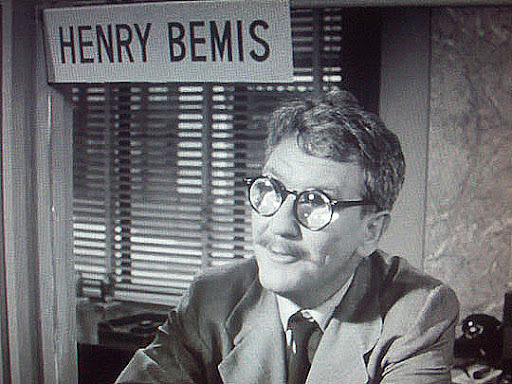
3 notes
·
View notes
Note
Why did you switch from animation to reviews? Also, do you still plan on doing CGI like you mentioned multiple times?
oH BOY..... you may need to sit down for this one
So it all started back in 2012. I was around 14 years old and just saw Rise of the Guardians and Wreck it Ralph. The stories, the characters, the world-building, the animation... now I never really went to movie theaters as a kid, but as a teen I started going and I instantly fell in love.
I went to community college for a few years and made some amazing friends. Loved some of my teachers and we participated in fun events like the 24-hour challenge and Campus Movie Fest. I had gotten in the top picks for Campus Movie Fest at some point and was supposed to go to the Cannes Film Festival in France to showcase my short film, but then the pandemic hit and it got canceled indefinitely.
So get this, for community college, I got a certification in 3D Animation and Video Game development. It's basically an AA degree but without general ed. (Why do you need general ed to get a degree in something? Math and PE have nothing to do with Animation. College is ridiculous. People have to pay you more simply because you were forced to spend more money in college. Wild.) Out of the 20 classes I had taken to get this certification, only 3 of those courses were hands-on 3D animation. And only one of those courses was hands-on video game development and I dropped out of that class because it was PC only and I only had a Mac at the time. I applied to the class without realizing it was accommodating only to PCs. So even my certification is barely reaching the basics for the title of it, but I did take another online course or two for 3D animation which I have a different certification for.
Now even with my 3D animation, I was never taught the physics engine. I was never taught hair or cloth simulation, but I do have modeling, rigging, animating, and texturing experience. For gaming, I have very little experience. I've only modeled things and found my way around Unity, but otherwise, I suck at coding. I hate coding with a passion. Making a video game without coding isn't really possible.
Now, when the pandemic hit, a lot of things were shutting down. I had no idea where I wanted to go next. People kept asking me where I was going for my higher education, but I kept getting warned not to waste money on college if you're trying to become an artist, especially at University. It's a money pit, and competition is so high, you're not guaranteed a job, you're just gonna be in debt. Even colleges like Cal Arts, who charge over $1K per class, I've been told are a "Pay to get in" kind of place. Where the money is used to nab professionals from their work to teach students or talk about their company or programs, and through that, you get a bigger chance to get your foot in the door because you know someone. I've unfortunately been told that's the more realistic way to get into animation: networking. If you're a shy introvert who doesn't know any famous people, you need to be extremely talented and unique to stand out to get the chance of being noticed. I don't really want to suck up to people nor do I want to waste thousands of dollars and 5 more years on college that I may not even need (let alone be able to afford) especially if there are online classes that may be even more valuable.
Now after I got out of college and started applying a few places, I discovered a LOT of unfortunate information.
Most animation these days is done overseas. South Korea, India, Japan, and Canada are the big ones.
Invader Zim, Steven Universe, Miraculous Ladybug, The Simpsons, OK KO, Star vs the Forces of Evil, Kipo and the Age of the Wonder Beasts, Adventure Time, Twelve Forever, and the Powerpuff Girls Reboot were animated in South Korea. The Ghost and Molly Mcgee is animated in Canada.
(The first four seasons of the Simpsons were animated in America until it switched to South Korea and India.)
2D traditional animation is no longer viable. Puppetry is the industry standard because it's the cheapest. Luckily, Toon Boom Harmony has allowed us to push the boundaries of 2D puppetry. Puppetry these days, if done well, can look really great, like Tangled the Series, but if you don't have Toon Boom Harmony, you're probably not gonna be hired.

Not even all 3D is made in the USA. If it's Disney, Dreamworks, or Pixar, then it's usually USA. But streaming service movies, like Sea Beast, Kid Cosmic, The Willoughbys, and Klaus, while they claim to be a "Netflix Original" that "Netflix Animation" animated, that's a lie. Klaus was animated by Yowza! Animation in Canada. The Willoughbys: Bron Animation, Canada. Kid Cosmic: Mercury Filmworks, Canada. Sea Beast: Sony Pictures Image Works, Canada. (X)
Go Go Cory Carson is written and storyboarded in America, but the animation is shipped out to be done in France. Sonic Boom is also French Animated.
Even Sony Pictures? Open Season, Surf's Up, Spiderman: Into the Spiderverse, Cloudy with a Chance of Meatballs, SMurfs, Hotel Transylvania, Over the Moon, The Angry Birds Movie, Sea Beast? Sony Pictures Imageworks is based in Canada. They're doing all the animation for them. It's not animated in America, it's merely funded by them.
I should also clarify: I only want to participate in stylized animated media. I don't want to do CGI for hyper-realistic films, which eliminates most of the animation jobs out there these days. It's just not my thing. The insane amount of details and uncanny valley are just so unappealing, I can't do it.
The closest animation studios are still far away. Most companies are located in LA. I'm over 7+ hours away from there. LA also has a high poverty rate, terrible air quality, is overcrowded, and is just generally not a good place to live, especially if you're low middle class. You're not gonna survive there.
Pixar is located in Emeryville, a few minutes north of San Fransisco city. Emeryville is the most crime-ridden city in that area. They tell you not to walk home alone at night. You're more likely to get robbed there than anywhere else according to the population ratio there. There are a lot of gangs that hide up there, and there's a lot of poverty there, even outside of San Fransisco. It's basically a trash pit. Not an ideal place to live, and commuting through 3-hour SF city traffic is also not gonna work. (X)
I have also been informed some people who work at Pixar are petty that the interns use their facility. Pixar has a heated pool, soccer field, gymnasium, and a few other nice things on their property. I was informed there was a person or two who got mad that an intern was using their basketball court.... when the intern was on break. As though they weren't part of Pixar, as though they had no right to touch the property. Apparently, they also used to make the interns push around little tea carts to serve refreshments as a way to "talk to the fellow animators" to probably get them interacting, but hearing that the interns were basically chored with butler duty to bother the animators hard at work seems like such a forced thing. That makes me uncomfortable. Of course, the person who told me these stories has been working with Pixar for over a decade or two now, so things could be very different as the years went on. Pixar itself on the inside of the animator building is gorgeous. They all decorate their office spaces in crazy ways, it looks like a movie set. But they have a bar and "whiskey club". They're apparently allowed to drink at work and have often had parties that got a little out of hand. There's also an old chain smoker room where the founders used to play poker and spy on people outside of their room with hidden cameras; I've even been inside. I don't think they use it anymore, though I'm not totally sure. Some of this info was fascinating, but the drinking made me uncomfortable. I kinda want to work with sober people here.
The sex ratio in the animation industry is also interesting and unfavorable. 70% of the animation and art school ratio is women, but only 34% of the actual animation workforce is women. 34% female to 66% male. More women study animation than men, but more men get hired and hold positions than women. Animation, ironically, has always been a male-dominated workplace. This unfortunately contributes to the "you have to know someone" or "be rich" to get-in situation. Men know a lot more men and not as many women. So the 30 to 40-year-old guys hire the other guys they know rather than a young poor girl with a passion. This makes it even more difficult for me to get in. (X)

20th Century, Netflix Animation, Nickelodeon, Cartoon Network, Bento Box, Vanguard Animation, Universal Studios, Titmouse, 6 Point Harness, ShadowMachine- all LA / South California.
There are a few places I could apply to, but what they do, I just don't care for. Niantic(Pokemon Go), Lucasfilm(Effects), Whiteboard Animation(Marketing), Sharpeyeanimation (Marketing), EA games (Mass Effect, Battlefield, Dragon Age 2, all those hyper-realistic war, sports, or fantasy games.)
So whether it's outside of the USA or within the USA, I need to move. I don't have the money for that yet.
Just find a company that does remote work, right? It should be easy, especially in pandemic times! Wrong. Most animation companies don't permit remote work. It's probably a security issue. But I've done research on this. The only big animation company I've found (so far) that allows remote work (or is HIRING for remote work) is Mainframe Studios in Canada. They have a 3D animation job list, and I guess they focus on animating Barbie movies(???). (X) But that's about it. And even if you're a remote worker, there's a high likely hood you still need a Visa to be allowed to work for a company belonging to another country. So that's a whole other legal process to deal with.
Disney is becoming a huge corporate monopoly over American animation. They bought Blue Sky only to kill them off. (Disney also just recently laid off 7,000 people due to their stock price drop and failed movies they released the past year with deliberately bad marketing for political reasons. (X) Disney also bought Pixar and is pushing for sequels because weird or bad, sequels and terrible live actions make them a LOT of money. Did you know Disney's terrible Lion King CGI remake is amongst the top 10 highest-grossing movies ever made? It's criminal. (X)
Because Disney is such a big name in the USA, there's a huge association of animation = children's media, which is not true. Animation at the Oscars also has its own category, when it's not a genre, is a medium. Disney often wins at the Oscars too because no one sees the other animations. Granted, Disney has an insane marketing budget in comparison, but it's clear no one cares to seek out animation outside of heavy CGI live-action these days. No small-time studios, no limited releases, no anime. The fact that Disney also now OWNS the Oscars is SUS as hell. (The fact that Disney-owned ABC threatened the Oscars, forcing them to cut 8 categories or else there wouldn't be a show that year is wild. There isn't even an oscar for stuntmen. What the fuck, Hollywood?) (X)
Dreamworks nearly went bankrupt and sold itself to Comcast back in 2013. Comcast also owns Illumination. Dreamworks has been focusing on making bad tv show adaptions of their IPs. So yes people, Jack would sooner meet the Minions than meet Elsa. Disney is the biggest corporate monopoly, but it's definitely not the only one. The animation industry in America is snuffing out its competition by buying it out for itself. It's insane the kind of power they have.
Competition is HIGH. Because of this, the only ways to get in? If you're rich or you know someone. Pixar gets over 3,000 intern applications every summer. Less than 100 are seen by actual hiring managers. The most interns Pixar has ever taken in a single year were 12. The least they ever took in a single year was two. A 12 to 3,000 ratio is not favorable. That's a 3% chance to get into a big-shot animation company.
And again, because remote work isn't permissible to new hires, you need to live in the area to commute to the campuses. This is one of the reasons why LA is so crowded.
If you get into an animation company purely remote and maybe even for a different country? You are the luckiest person alive.
Programs are expensive. The animation industry is very strict on what programs they use. The industry standard for 2D puppetry is Toon Boom Harmony; the industry standard for 3D animation is Maya, and the industry standard for video game development isn't as clear but Unity is one of them.
Some of these programs are free, as long as you are a student. If you are attending college or a certain online program, you can use your school-issued email through them to apply to get the program for free for about a year. Otherwise, if you're using it to make your own animations solo?
Autodesk Maya: $225 a month or $1,785 a year (X)
and guess what? Maya removed its free render service. Arnold is now built in by default, however, if you want to BATCH render (Meaning render a full scene or several slides) it will slap it's ugly watermark over it.

Fun fact, this very rendered watermark can be seen accidentally in a single frame for the Kingdom Hearts Frozen cutscene
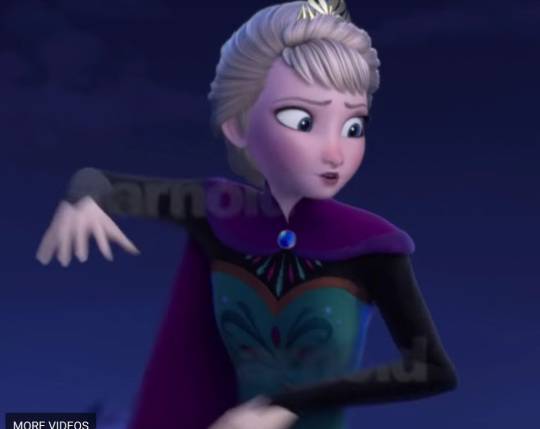
Well, you need to batch render if you're trying to animate so let's see what Arnold costs- $50 monthly to $380 annually.... are you kidding me?! The rendering PLUG-IN BUNDLED TO MAYA COSTS MORE TO USE THAN THE OWN PROGRAM?! (X)
Now, there are other rendering plug-ins you can probably use with Maya. But they all have their ups and downs and their own costs as well. (X) Pixar's Renderman is $595 per license. I can't seem to get info on Octane. V-ray solo is $39 monthly while premium is around $60 monthly.
Now there IS Blender, an alternative to Maya. It is free and I have it. That is ideal to work in for people like me. I tried it a while back, but I hated the interface windows. It was hard to work on it when you can't close them properly. It's possible they've fixed this in an update, but I haven't touched the program in over three years so I wouldn't know. It's different from Maya a little, so it has ups and downs in comparison too. But Blender is a savior to 3D artists everywhere.
Toon Boom Harmony isn't as bad but still high: Lowest price is $27 monthly / $220 annual and the highest is $124 monthly / $1,100 annual (X)
Unity has a basic version that is free, but Unity Plus is $399 yearly while Unity Pro is $2,040 (X)
So some programs are clearly more viable than others. But imagine you're trying to model, texture, rig, animate, simulate, and render a short film all by yourself in Maya. That's gonna take you over a year or two, and you'll have several thousand dollars out of your pocket by the time your free trial ends. And might I say, for an industry-standard program, Maya sucks. It's almost unusable without those plug-ins for not only rendering but also for the models to even be able to SELECT their BONE rigs.
Do you want to practice on your own when school is out of session? Fuck you! Fuck subscription services! Welcome to capitalist hell, baby!
Again, using Blender is more viable, but you're still going to be basically doing everything yourself. That's gonna take years. Do you have the patience for that? Do I?
Because of the pandemic, movies aren't even hitting theaters anymore. They're going straight to streaming services. Streaming services of which, gain sole rights to and can take media off their platforms at any time without warning. Thanks, Discovery+ ! Does everyone remember the HBO Max Animation & DC purge? It could happen to other streaming services too. Piracy will save the future of animation at this point. (X)
And again, Streaming services like Netflix will purchase films and claim they made them by slapping their logo over it; but no, they either bought the distribution rights or produced them through funding and maybe storyboarding. Often times from a Canadian film studio. (Link again X)
Even stop motion companies like LAIKA are losing money and may have to shut down or be bought out in the future, especially considering how much work and money they put into their films vs. how much money they actually make. (X)
All of this? Naturally made me fall into a depression. My god, the layers of hopelessness. My animation and modeling is pretty average too. I'm decent. I can maybe make a good shot. But I can't blow people away like James Baxter can. I mean, I shouldn't compare myself to people. If I worked really hard, maybe I could get into a good company. But again, I have to move! A part of me gave up. I don't really do 3D animation anymore, though part of me misses it.
I still 2D animate. I'm trying to make a short film and though my college friends who were working on it with me have given up, I have done my best to keep going. Even if it has been produced at a snail's pace for the past three years, I still intend to finish this animation. It's gonna be beautiful when it comes out, and it will be a wonderful portfolio piece regardless.
So with nothing else to do and no other kind of job experience really under my belt(plus my family is prone to covid so getting a job in the pandemic was just kind of out of the question) I decided to go to youtube. I heard some people can make a little money on there, but the truth is I had actually wanted to become a youtuber for a few years prior. I've always looked up to animators and reviewers on youtube, I've loved the stories they tell and their incredibly detailed analysis essays on movies, tv series, books, etc. I wanted to be one of them. I wasn't sure exactly what I'd do, so I just followed the Youtube Partnership program set up which took a few months, and then jumped in! I found I only had the time to upload once every month or two. I had a ton of audio issues and I'm not outputting at the proper 1920 x 1080 quality that I should be doing either. It's a huge learning process that I still haven't perfected, but I'm taking notes to try and get better.
Even though Youtube is fun, I only make $300 a month, and that isn't even consistent. With patreon, I make maybe another $80 or $100 on top of that, so overall $400 a month average. That's really nice and pretty cool! But it's not enough to survive.
Now I work part-time at a coffee shop. My mental health is a lot better and I love my coworkers. I make roughly $400 a week in comparison to the $400 a month. It's still not enough to live off of (the cheapest rent around is over $1,000 a month, not ) and it's still a temporary job in the long run. I intend to work here for maybe another two years to save up money.
But what do I do now?
Am I welcome in animation spaces anymore?
As a critic of popular media, it could be likely that they could fire me or deny my application because of my critique of their past films or tv series. They could see my youtube persona and assume I'm a raging untrustworthy nitpick instead of a passionate, kind person.
Vivziepop's Spindlehorse company? What Viv was doing was a dream. I was so inspired by her. She made her own company, made a super successful pilot, and was even creating more jobs for traditional, high-quality animation. However, for Hazbin Hotel, she required more funding, which is why she sold it off to A24, who now has corporate say in the show. A24 is known for letting creators be more lenient, but otherwise, Viv won't have full control over it anymore unless she managed to get them to sign something over to her; but with the rumors of her being kicked off season 1? I don't know anymore.
Her own company Spindlehorse; they rely on youtube revenue and/or merch sales to fund Helluva Boss. That's a tricky business practice, but it's kept them afloat so far.
However, Spindlehorse is hiring a lot of people as of late. This could be a bad sign; that people might be leaving the company due to potential mistreatment or unhappiness. With the way the show is going, I don't really want to be part of that company regardless, but maybe before season 2 of Helluva Boss, I would have considered applying. Had I made any critique videos prior, there's no way they'd accept me. "Aren't you that one YouTuber that said my writing is bad for season 2 episode 2?" And you expect me to hire you?" Like yeah, that application process would go down well. Not. By critiquing artists' work, some of them are very sensitive. I'd be kicked out for a lot of things, when really, we artists should be critiquing each other all the time, trying to improve. That's how the writer's room always is, ahaha... hours of fighting goes down in those meetings. It's intense, but fun.
But yeah, it's such a shame. Even small companies need to sell out to corporate to survive. Either that or be HEAVILY crowd-funded, which again, can be a slippery slope.
I see a ton of small projects on Twitter looking to hire people, or looking to become a big studio to release a pilot or game. I've joined a few of them, but most are unpaid because of COURSE they are, and then these projects?? Just don't go anywhere. Because it's unpaid. Because we can't afford to work on a project for free. IRL comes first. Some of these projects seem so great but they don't go anywhere, and it's hard to have faith in start-up studios anymore. (Game creators might have a chance, but tv series or films? Good luck, folks.)
At that point, should I just make my own company? I don't have the money or knowledge for such a thing! It's insanely expensive to start a business and get licensing. So much paperwork, so much everything! And the USA Government is so behind in understanding technology. If you want to create a remote business and/or copyright something, you're still required to put an advertisement in a local newspaper about it, even if your business isn't selling to locals. 💀 The number of fees and ridiculous legal hoops you need to jump through... it's a ridiculous waste of time and money. But you need to do it. The question is, am I willing to do it? Am I willing to tackle such an insane thing by myself?
I want to keep my internet persona and IRL persona separate, but can I? I value having a private, quieter life away from the screen. I worry about getting doxxed one day because of the nature of the internet. I worry about people finding my IRL resumes or profiles for work I want to do outside of youtube for security's sake. My art style is unique and very recognizable. I don't have a lot of private art that is worthy of being in a portfolio. But for absolute safety, I'd need to password-protect my websites or portfolios so the public doesn't have free access to them; only companies I'm applying to. But at that point, does password-protecting my resume and portfolio make it less likely I'd be hired due to the inconvenience? Due to the private, hard-to-find nature of my work? Being a YouTuber with great story skills and art skills with a fanbase could be a big plus to getting hired somewhere, but it could also be a horrible disadvantage that would get me fired. It's a double-edged sword that I cannot work around and I don't know what to do.
I've considered the video game industry, but even that isn't ideal. A lot of the indie ones I adore aren't made in the USA. Gris and Monster Camp were made in Spain. Ori and the Blind Forest: Austria. Hollow Knight: Australia. Little Nightmares and Raft: Sweden. LIMBO & INSIDE: Denmark. Outlast, Don't Starve, Spirit Farer, Bendy and the Ink Machine: Canada.
SuperGiant Games did Hades, Transistor and Bastion and is located in SF, but they're not hiring. Janimation, a multi-media company located in Texas isn't hiring. Frederator in New York isn't hiring.
I don't want to work for a studio that does nothing but first-person shooters or sports games. If I want to get into the gaming industry, I probably need to crowdfund and make a company to make a game myself.
If I make my own game, which I've wanted to do for a long time now and still want to... I can't code. I guess I could try to hire someone that could? But a game to the extent I want... I'd need to start small. I'd need to practice. It's several years of work. Will it even be worth it? I don't think I can do it alone. I'd need crowdfunding and workers; which again, here comes the "make my own studio" issue...
Do I even want to animate anymore? I prefer traditional animation in comparison to puppetry. I prefer 2D animation to 3D animation simply because it is more accessible. But even then, I'm finding myself drawn more and more to writing, storyboarding, and character design. If I were a 3D animator, this is mostly what I'd be working with all day: Naked models in an empty room. I'd do none of the physics simulation or texturing or lighting.
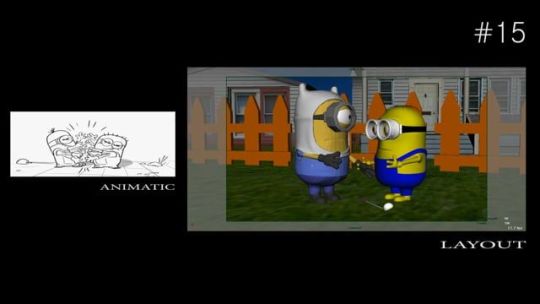
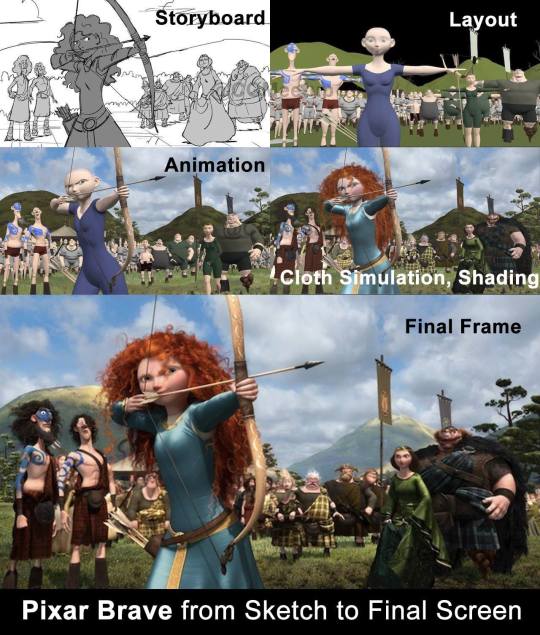
Animating naked & bald people all day... I don't know... 3D Animation kind of lost its appeal. You only work on such a small portion of a film, you almost never have the bigger picture. You won't see the final result until the film is done. As an animator, you're almost kept in the dark. Maybe that's how they want it anyway, since leaks are a huge issue they keep quiet under strict NDA.
But yeah, anyway... I'm an artistic digital generalist. I can do almost anything. 3D animation, storyboarding, writing, photo editing, illustration, rendering, modeling and so much more. It's hard to choose what you really want to be in this industry. I feel like Barry Benson dfklgjdflkjg

I don't know what I'm gonna do anymore. There's gotta be a solution to this but I just can't figure it out. I don't want to give up my youtube channel so I can be an animator. I don't want to give up a safer, quiet countryside house to be able to survive financially. Am I even willing or able to move countries? Is my career more important than friends and family?
I think I'm thinking too much about everything. I should start small. Move less than an hour away first and move in with roommates to get a feel for independence instead of jumping into it immediately. Get a job at a small time company, maybe not for what I want at first, but it'll get me some experience and maybe I'll learn some things along the way to understand where I can go next. Take it slow and don't panic too much over trying to be a young big shot. Take things one day at a time? That's my current goal, I suppose.
So you know... to answer your question... why did I switch to youtube for a current career? Because of a classic existential & career crisis in my 20s. Will I ever go back to 3D animation? Maybe. Maybe one day.
#ask#personal#3D animation#career#youtube#long post#i should also say because im a fan artist#i dont have a lot of original work to add to a portfolio which is a HUGE issue#Pixar doesnt even want to look at a portfolio if it has copyrighted material#they want to avoid lawsuits if they see material owned by a different company#you need to be so careful what you put in a portfolio#i mean especially if i use my 2D stuff or illustrations#my illustrations especially#animation#the animation industry#CGI#rant
86 notes
·
View notes
Note
Hello,i would like to participate in your Synastry game, my information: dob 9 August 2003,time,17:5 pm ,Haryana India .
My celebrity crush: lee know, October 25, 1998, 8:00 AM,Gimpo, Gyeonggi (Korea, South)

Thank you 🌷💕
Have a great day 💕🌷
hello
If you met it wouldn’t be friendship at first sight. Mars conjunct Mercury, Mars opposite Mars shows you would challenge one another. You would likely have different worldviews and difficulty seeing eye to eye. This conjunction in the 9th H shows it could be due to your different cultural upbringings. You would have tons of disagreements if you were to have a deep and long conversation.
Moon conjunct Pluto shows it would be life altering. The conversations you would have could be potentially eye opening for both of you. It’s likely you still wouldn’t agree since your mercury is so harshly aspected. However, you don’t need to agree to understand where the other person is coming from.
His Jupiter in your 3rd along with the mercury aspects shows your conversations would be lengthy. You would somehow end up discussing deeper and broader philosophical topics. You could discuss culture, religion, & similar topics where there isn’t really a right or wrong.
In natal his mercury conjuncts chiron showing he likely has deeply frustrating experiences in regard to communicating. He may often feel misunderstood. He could feel others perceive him negatively or talk badly about it. This can make him very private and difficult to get to open up in conversation. His Scorpio Rising and Virgo Mars makes him a reserved person. He would have a good poker face.
If you were to meet in a normal setting, it seems the way you would get him to speak up is actually by frustrating him. He would have to disagree with you so much that he would feel like he has to say something. Your first impressions wouldn’t be good but not necessarily bad. You would just challenge one another’s way of thinking. No one would leave the conversation angry or upset. Rather you would be opened up to a new perspective. However, due to the fixed nature in each of your charts, you wouldn’t change one another’s minds on anything.
If you were to have several meetings, you would likely find each other understanding one another’s point of view. Your Moon and Venus aspects show you share similar values but express them differently. At the core, you both have similar morals. For example: You disagree on a religion but the lessons from each religion are the same - to be a good person and help your fellow human beings when you can. You would develop an appreciation for one another’s way of thinking.
His neptune in your first house shows you have an illusion to how you see him. This of course is everyone with celebrities - we don’t actually know them. This placement shows you may see him as a comfort person. If you met irl, that version of him would be lost as he might be very different than expected.
2 notes
·
View notes
Text
From Curiosity to Craft: How i learned to do Nail Extensions at Home.💅
Mastering nail extensions at home has been one of the most fulfilling and transformative experiences in my beauty journey. It all began when I enrolled in a cosmetology course in my hometown. My focus was on makeup, hair, and skincare, but I often observed other students practicing nail extensions. One day, they asked me to be their model. They only applied extensions on one hand, but that was all it took to spark my interest – I loved how polished and sophisticated my nails looked, and I knew I wanted to learn this art myself.
However, the cost of professional nail extension classes was beyond my budget. Determined to learn anyway, I turned to online resources and discovered a wealth of information. YouTube quickly became my primary teacher, offering tutorials from skilled nail artists. Pinterest provided endless inspiration, while Instagram Reels showcased creative tips and trending designs. Although TikTok was not available in India, these platforms offered me all I needed to start learning the basics of nail extensions and nail art.
Starting with Nail Art Basics I began by focusing on nail art as my starting point. Not only did it require minimal materials, but it was also a great way to develop steady hands, creativity, and an eye for detail. From color combinations to pattern designs, nail art helped me practice brush control and become familiar with nail anatomy. I enjoyed experimenting with small designs, which provided the perfect foundation before moving on to more advanced techniques.
Investing in Extension Supplies After saving up for a while, I finally purchased a beginner’s nail extension kit, which included nail tips, gel polish, acrylic powder, and other essential tools. I started with stick-on and press-on nails, practicing the process of application, shaping, and finishing. Each attempt taught me more about the importance of precision and patience, as even the smallest adjustments could make a huge difference. Practicing these steps gave me confidence and helped me build a steady foundation before I moved on to more complex nail extensions.
Advanced Training: Seeking Professional Guidance While online resources were excellent, I realized that certain advanced techniques—like acrylic overlays, gel extensions, and sculpting—were difficult to perfect without hands-on guidance. To improve, I reached out to a family member who had professional experience in nail artistry. Although she lived far away, I arranged a weekend visit and spent three days under her instruction. During this time, she taught me key techniques like sculpting, creating durable extensions, and layering for strength and style. This experience was a game-changer, as it allowed me to correct mistakes I didn’t even realize I was making and enhanced my skill level tremendously.
Perfecting the Craft After returning home, I practiced diligently, dedicating time each week to improve. I started creating full sets, experimenting with techniques like ombré fades, encapsulated glitter, and 3D accents. I joined online communities, where fellow nail enthusiasts shared tips, and found that feedback from other learners greatly boosted my confidence and skill. Gradually, my creations became more polished, and I could see the difference my persistence made with each set.
Final Thoughts Learning nail extensions at home has not only been a creative outlet but also a testament to the power of self-directed learning. What started as a curiosity has become a rewarding skill that brings beauty and joy to others. If you’re passionate about nail artistry, remember that with dedication, patience, and the right resources, you can achieve stunning results without stepping into a professional classroom. Whether it’s a new design or perfecting a technique, the journey is as enjoyable as the destination.
Some sets i did when i started learning.😁

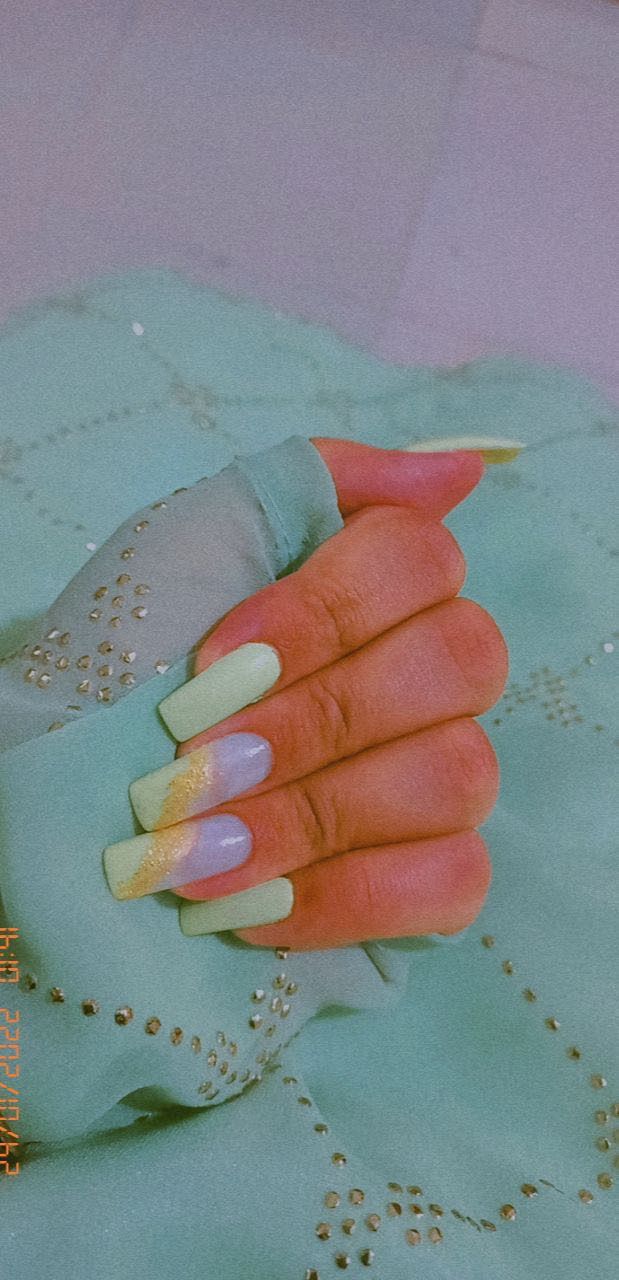

Then i got a little better. 🤭




And this the latest set i did for my cousin on her birthday.💟

#nails#nail extension#learning#cosmetology#nail art#manicure#nail extension at home#nail style#acrylic#acrylic nails#gel nails#ombrenails#glitter#3d nail art#full set#nail polish#cute nails#nails at home#youtube#pinterest#tiktok#nail videos#tutorial
3 notes
·
View notes
Text
All the Armored Core VI Endings Are Bad
There's been some debate online as to which ending to the game is good and which is bad, and why, and I'm here to tell you that they're all bad in different but more or less equally horrible ways and you're wasting your time defending one over the other. Before we start in on that, let's lay some groundwork. I'd like to credit this video by MadLuigi with helping hone my thoughts, although a lot of the below are my own observations.
Dune & Blade Runner
The first thing you need to know is that Armored Core VI: Fires of Rubicon (henceforth AC6) is extremely heavily based on the novel Dune and the movie Blade Runner.
The Dune connection is pretty obvious: Coral was originally named Mélange in the leaked information on the game, using the more technical name for the Spice which facilitates future-sight and thus enables FTL travel in the Dune books (among other things). That should tell you all you need to know, but it doesn't stop there. Of course, Rubicon 3 being the only known planet with Coral is just like how Arrakis in Dune is the only source of the Spice Mélange. The currency of all past Armored Core entries were the generically named credits, but in AC6, it's COAM. The big feudal megacorp of Dune, standing in as the space version of the Dutch East India Company, is CHOAM, Combine Honnete Ober Advancer Mercantiles. While the AC6 currency might either be an acronym or a contraction and its full meaning is unknown, this is more than a coincidence. The Rubicon Liberation Front styling themselves as "Coral Warriors", their use of Coral as a quasi-religious substance and object of worship, and their zealous dogmatism is an obvious reference to Dune's Fremen, and particularly the Fedaykin, or death commandos. Dosers and civilians are kind of like how the people of Arrakis are inadvertently exposed to Spice simply through ambient sources with the Dosers taking Coral recreationally like how Spice is used in coffee, and mealworms raised on Coral being the source of most food on Rubicon 3. All this will be very important to know for the Liberator of Rubicon ending.
The references to Blade Runner are more subtle. While human augmentation (Human PLUS) has a long history in the Armored Core franchise (going back to the first game) and in the cyberpunk genre as a whole (to which AC6 absolutely belongs), one of the progenitors of that genre is Blade Runner (1982), released in the same year as the manga Akira, and predating the genre's "literary" birth with Neuromancer in 1984. Blade Runner has an immense influence on AC6's visual and auditory style, as well as its treatment of augmented humans in a way similar to the Replicants (that is to say, as basically slaves). If you want to see this for yourself, all you have to do is compare AC6's Reveal Trailer with the opening of Blade Runner. You should be able to easily hear how heavily Kota Hoshino and company were influenced by Vangelis's score, as well as see how the visual framing was influenced.
These are not the only references AC6 has or makes, but they form the bedrock of understanding its genre and heritage as a thoroughly dystopian cyberpunk work.
Coral
AC6 revolves around Coral, and you need to understand that Coral is also a number of allusions wrapped up into one. While at heart an alien substance of biological origin (but not necessarily a lifeform unto itself) which mimics Dune's Spice Melange, it also evokes many other things:
Mobile Suit Gundam: The Witch From Mercury - Permet: Permet is a mineral which facilitates remote data connections and is used to enhance various technological products, as well as augmenting humans. In sufficient quantity, if activated correctly, it can also modify local spacetime conditions, and can even host conscious minds. Sound familiar? This is likely a case of simultaneous parallel evolution rather than direct reference, as G-Witch came out so near the end of the game's development, but the similarities with Coral are hard to ignore. I'm not the first to draw this connection.
The Andromeda Strain - Andromeda: The titular Andromeda is a biological organism from Earth's upper atmosphere which directly converts energy to matter and which is capable of rapid mutation; it goes from crystalizing blood upon initial landfall on the planet to eventually consuming rubber and plastic near the book's conclusion. Andromeda's ability to self-replicate using almost any source of energy and to mutate to fit its environment is obviously reflected in Coral being able to grow best in space and experiencing Mutation Waves.
Mythology - Red Mercury: A purely fictional substance, red mercury is supposedly involved in nuclear weapons manufacture or capable of being used as an extremely potent chemical explosive rivaling nuclear weapons in destructive ability depending on who one asks. Coral's combustibility and color is a fairly obvious allusion to this or something like it.
Real Life - Nuclear Weapons: It should probably come as no surprise to you that due to the atomic bombings of Hiroshima and Nagasaki, and more recently the nuclear meltdown in Fukushima, that Japan has long had a fascination with and revulsion toward nuclear weapons. Coral is an explicit reference to nuclear weapons technology, taking the place of a sci-fi equivalent to them: a nuke greater than nukes. You can tell because the visual language of the Fires of Ibis directly references nuclear test footage:
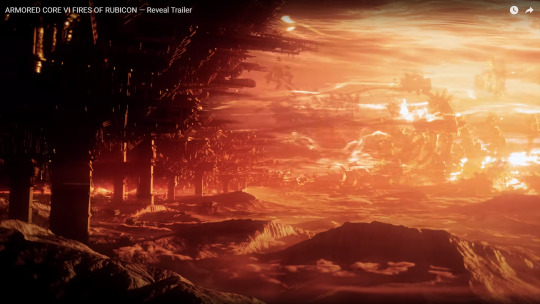
youtube
The destruction of the Grid system is visually a direct allusion to test examples of nuclear destruction.
Rubiconians
When I refer here to Rubiconians, I refer explicitly to Coral-based intelligence like Ayre, not the human population of Rubicon 3. This is an important distinction. It's also important to understand that intelligences like Ayre are a relatively recent phenomenon. We know this because the game tells us so:
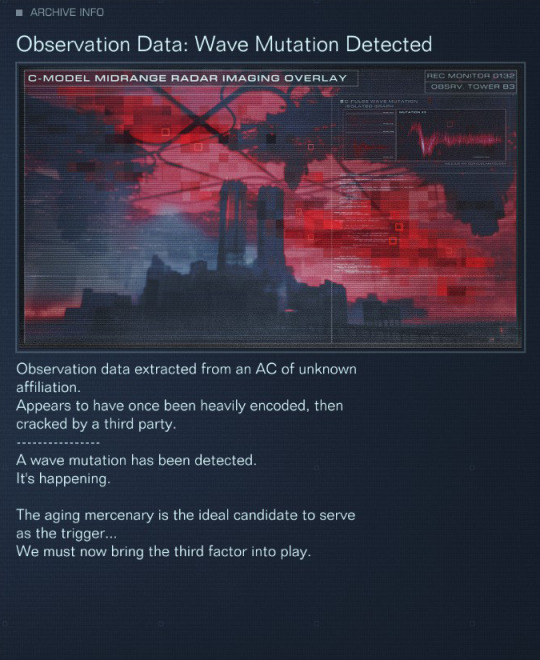
The Mutation Wave detected at Watchpoint Delta, which 621 liberates by destroying the regulator, is Ayre, who subsequently makes Contact with 621. We know this because ALLMIND will also refer to Ayre as a "C-pulse wave mutation—Ayre" in the Alea Iacta Est ending mission. In other words, Ayre is relatively new. Coral has not traditionally manifested sapient personalities on Rubicon 3, certainly not prior to the arrival of humanity. Ayre is a direct reaction to humanity's actions. Given Ayre is a Wave Mutation, although she (and ALLMIND) refer to other Coral as her siblings, it is not at all clear that they are self-aware in the same sense as she is. She seems to be unique among Coral, which is why she and 621 are the triggers for Coral Release in ALLMIND's ending—only they have properly made Contact.
This should immediately make you suspicious for two reasons.
Firstly, humans are the way they are because of a long evolutionary process which begat physical, corporeal bodies, eventually resulting in anatomically modern humans that think and express in the ways we are familiar with. Coral does not have any of these constraints, and therefore should not naturally produce anything resembling a human mind, and yet Ayre seems remarkably human without having any of the physical neurological structure or evolutionary history to support that human mentality. This is extremely unlikely to happen purely by random chance.
Secondly, we learn over the course of the game that Ayre is capable of hacking, cracking, searching, and understanding human communication and data systems to an impossibly advanced degree. This is proven in small ways over the course of the campaign where she helps 621 out with locked systems—often to Walter's surprise—but is most grandly demonstrated in the Fires of Raven ending, when she takes over the PCA's abandoned Closure System to try and shoot down the Xylem, a feat which Carla asserts would be impossible for the corporations to do—and Carla is the best and brightest survivor of the Rubicon Research Institute. In other words, Ayre is capable of breaking into any piece of human technology, and can also easily determine what ALLMIND is doing despite encryption and it covering its tracks.
Ayre also has access to another piece of technology which is outfitted with a Coral transceiver: 621. Ayre is most likely readily able to approximate a human in mindset and expression because she's hooked up to a human full of human memories.
This is not to say that Ayre is or isn't deceiving 621 as to what she is. It's not clear how sincere or not Ayre is. It's not clear how truthfully she is presenting herself and her agenda. She could be perfectly earnest and forthright, or she could absolutely be presenting 621 with what she thinks 621 needs to hear to do what is best for Coral and using 621 as a tool and means to an end, or anything in between. She could be benevolent and a true believer in symbiosis, or she could be using 621 to liberate Coral so that it may parasitize humanity. It's worth noting here that the easiest means of hacking systems is social engineering, and that 621 was specifically targeted for Contact.
What you're really presented with in AC6 is an Outside Context Problem: you are interfacing with an alien entity that certainly seems to be sapient, agreeable, helpful, and wanting only the best for you and humanity as a whole. But does it really? The game is essentially about who you decide to trust as you make a decision on an evolutionary question about the future of humanity.
Are human morality and ethics, and a willingness to be open and inclusive and welcoming, an evolutionarily adaptive trait? Or are they, in this case, maladaptive? Or... neither? Is trusting Ayre a good idea?Or Rusty? Or Walter and Carla? Or even ALLMIND? Or is the road to Hell paved with good intentions?
The truth is... all your choices are bad.
Ending: Fires of Raven
Walter and Carla's point—and that of Overseer and Professor Nagai of the Rubicon Research Institute—is fairly easy to understand. If nuclear bombs could self-replicate and were also sapient, would you allow them to do so just because they asked nicely? Or would you consider that to be a threat to not just humanity, but all life on Earth? They see the question of Coral as this hypothetical writ large, because Coral can replicate endlessly throughout space.

If one planet's worth of Coral can burn and contaminate an entire star system (or several; the game isn't quite clear on how many systems were affected), then what could a star system's worth of it do? How about several star systems? Or an entire galaxy? Coral is potentially a threat to the entire universe if it's allowed to get off of Rubicon 3. That Coral can also be ignited at any time by any sufficient explosion or natural phenomena; solar flares, supernova, nuclear bombs, even a sufficient chemical explosive or friction heating can ignite it. It could all go off for any reason at any time. Coral will present a threat as long as it exists, because there will always be those who seek to claim its power as their own for whatever ends: "Where there's Coral, there's blood."
The calculation as far as Overseer is concerned is simple: burn Rubicon 3, everyone on it, and everyone near it to save the rest of humanity and the universe at large. The casualties are collateral damage compared to the stakes. There are far, far more humans elsewhere than there are on Rubicon 3, and the needs of the many outweigh the needs of the few.
Is that right? Is it right to make Coral extinct, and genocide those on Rubicon 3, to save the rest of humanity, which apparently lives under an oppressively hypercapitalist megacorporate dystopia?
(It's worth noting at this point that the PCA is not the military of some grand government off to one side somewhere, like the UNSC Navy. It's its own entity and is effectively the Rubicon space police. This is reflected not only in its ship design, but in its ranks ("high-ranking officers" in the PCA are First Lieutenants and Captains, which are junior officers in an army or air force, but high ranks among police), in its language (the PCA treats resistance as a "declaration of war" upon itself, not any government it represents), in its ability to be banished from Rubicon 3 and an inability to reinforce from anywhere else, from the PCA's System AI being buried in the depths leading to Institute City, from the its terminology (Ekdromoi, CATAPHRACT, and NEPENTHES are all references to ancient Greece, notably dominated by city-states), and from the fact that in the Fires of Raven ending, despite being disgraced and shattered it's still in a position to negotiate, which would have been taken over by a higher authority above it after its dismal performance if any such authority existed. The PCA was most likely set up by the corporations (or perhaps planetary-level governments) as an independent actor after the Fires of Ibis. There is no grander government out there to save the day, and Armored Core as a franchise has never centered governments outside of Armored Core 2: Another Age.)
Some say yes, for the reasons Overseer gestures at. It's simply too dangerous to let it live, whether it's exploited by corporations or not, whether it achieves a Coral Collapse or not. It's also not talked about much, but an entity like Ayre also represents an infinitely more capable danger than one like ALLMIND; all she might need is time to gather resources.
Some say no, arguing that entities like Ayre have as much right to exist as humans, and that extinguishing them is not only repeating humanity's greatest crimes but denying its future improvement. It becomes tempting at this point to draw historical parallels, but the truth is that any such parallels are of dubious applicability considering human-on-human violence is not the same as interspecies violence against aliens, which humanity has (seemingly) never encountered, let alone aliens which are effectively weapons of mass destruction unto themselves. Some go even further and suggest humanity as it exists within AC6 is not worthy of survival, which is a much more suspect argument which frankly reeks of ecofascism.
The answer is: it depends on your risk assessment. Neither we the players, nor 621, know enough to actually make a truly informed choice. All the people who do and who aren't blinded by greed and power lust (that is to say, Walter, Carla, and Nagai) think it's the right thing to do. Do you trust them? It's ultimately your judgment call.
If you take the Fires of Raven ending, you (supposedly) destroy all the Coral, purge life from Rubicon 3 and its system, and cripple human civilization at large. Walter, Carla, Chatty, Rusty, Ayre, and everyone else all die. 621 is perhaps the sole survivor. It seems the Fires of Raven are grander than the Fires of Ibis, and the disgraced PCA and depleted remnants of Arquebus and Balam agree to abandon Rubicon 3 as they try to rebuild. 621, as Raven, goes down in history as the greatest monster of all time.
It is, however, entirely possible, given FROMSOFTWARE's Dark Souls series, that the Fires of Raven is merely the second in a never-ending line of humanity having to return to Rubicon 3 to ignite more Fires again and again, in a kind of grim echo of "linking the fire" in the first Dark Souls.
But what if I told you that the reason this ending is bad isn't necessarily because of the apparent extinction of Coral, or all the deaths both personal and statistical? Those are bad things, to be sure, but the real tragedy of the ending is you failed to actually engage with the problem Coral represents. You threw the baby out with the bathwater, and although you may or may not have prevented a Coral Collapse, you did nothing to change humanity's dystopian reality, and actually only made it worse by making it post-apocalyptic on top of everything else.
This fundamental issue—not really engaging with the problem—is true for the other endings as well. Each is an all-or-nothing solution to the problems at hand, and that is why they are all bad. Let's skip over to...
Ending: Alea Iacta Est
In this ending, Ayre lives, as does maybe Rusty, but you kill Chatty and ALLMIND kills Walter and Carla. ALLMIND betrays you, you fight the personality upload of G5 Iguazu, and finally defeat ALLMIND, but initiate ALLMIND's Coral Release program yourself.
What happens next is... unclear. Interpretations of it vary.
To me, it appears to be a kind of transcendent technological singularity wherein Coral, humanity, and humanity's technology in the form of Armored Cores, all unite together to create new kinds of beings beyond time and space, and beyond even death itself. The closest analogy to this is probably the Human Instrumentality Project in Neon Genesis Evangelion, or the "stargate sequence" in 2001: A Space Odyssey where Bowman is uploaded into the Monolith and becomes the Star Child. Or, to return to Dune once again, Leto II's symbiosis with the Sand Trout of Arrakis to become a human/Sandworm hybrid. Given the other ACs present in the ending, this appears to not be limited to 621, but likely extends to everyone on Rubicon 3, if not all of humanity. Another analogy might be the true ending of Bloodborne, but on a much grander scale.
This has the same problem as a sort of similar ending from the Mass Effect series, Mass Effect 3's Symbiosis ending. While in that game, BioWare attempted to make it the "correct" choice by showing everyone happy and satisfied with it in its ending cinematic, the truth is that nothing can possibly be a grander violation of the rights of sapient beings than forcing them into a new mode of existence which is discontinuous with their lives theretofore. It is not simply a violation of individual decision-making ability, it is a violation of bodily autonomy and control—it is rape, by the commonly understood definition, as rape is truly about bodily power over others and not sex, and it is the most egregious kind of rape imaginable: becoming something else entirely beyond human. This is effectively an eldritch body horror ending in which somewhere between Rubicon 3 and the entirety of humanity, if not the entire universe, appears to have been raped in an irrevocable fashion.
Whatever its exact nature, this ending has the same problems as the Fires of Raven: it does not actually engage with any extant problems at hand, it simply throws the baby out with the bathwater. In this case, rather than it being Coral that's disposed of, it's humanity itself, as V.III O'Keeffe feared when you were sent to eliminate him on the road to this ending. Humans aren't human anymore. None of humanity's issues were actually dealt with, they were simply disposed of wholesale with humanity having been deemed unworthy of any expenditure of effort, merely replacement through upgrading.
And here we come to...
Ending: Liberator of Rubicon
On the surface, this seems like the good ending, which is why most people call it that. Ayre lives, although 621 has to personally kill Walter, Carla, and Chatty, and it seems like Rusty is killed. The RLF takes control of Rubicon 3. 621 and Ayre look to the cosmos with hopeful optimism. What's not to like?
Except... remember Dune? This is the ending of Dune.
Do you know what happens after Paul Atreides and the Fremen defeat Emperor Shaddam Corrino IV and House Harkonnen on Arrakis, and Paul becomes Emperor himself? I'll tell you. His fanatical Fremen warriors spread his name throughout the rest of human space in Muad'Dib's Jihad, conservatively killing 61 billion people, mostly serfs and peasants and those who refused to forsake their faith.
Now you might say that Ayre and 621 don't want that to happen, but that's the point: it's not their choice to make, it's the RLF's. Paul didn't want it to happen in Dune either, he simply knew he couldn't stop it.
What exactly do you think is going to happen now that the faith of the Coral Warriors of the RLF is affirmed as righteous and true, now that they've defeated the PCA and corporations, now that they're in possession of all the Coral and all the Rubicon Research Institute's technology? What do you think Elcano is going to do with that research, alongside BAWS? Do you think they're going to just secure the system and be content?
Also, if Coral and humanity are to coexist together, doesn't that mean both growing in kind, together, as Ayre says? Doesn't that mean Coral augmentation surgery for everyone, with all the drawbacks that has? Or, at least, every human being a Doser to commune with Coral? What about all those who had Coral-replacement augmentation surgery, which negated the need for relying on Coral in the first place? Are they not automatically a threat to the new order, which must be destroyed to safeguard it?
Think that sounds too grim?
Don't you think it's odd that this ending comes with no narrated epilogue like Fires of Raven does, telling you what happened afterward? Instead you get Ayre telling you simply:
"Raven… One day, humanity and Coral will thrive together. You kept our potential safe. I know Walter feared a Collapse… but I promise you, there's another way. Raven… we'll find it. Together."
That sounds quite hopeful, but personally I key in on two particular phrases: one day, and we'll find it together. They remind me of something from another franchise:
youtube
youtube
Palpatine seduces Anakin to the Dark Side of the Force by dangling the prospect of cheating death in front of him, preying on Anakin's fear of visions of Padmé dying. After Anakain has committed to betraying his allies and helped kill Mace Windu, Palpatine admits:
"To cheat death is a power only one has achieved, but if we work together I know we can discover the secret."
I find Ayre's very similar speech after 621 has betrayed and killed Carla, Chatty, and Walter to be... uninspiring... personally.
Now, I'm not telling you that Ayre is Darth Sidious or a Sith Lord, although it sure is interesting Coral is red.
What I am telling you is to remember that the road to Hell is paved with good intentions, and where there's Coral, there's blood. You shouldn't naïvely assume that the story so heavily influenced by Dune, which is at this point directly referencing Dune, will stray very far from it, no matter how good Ayre's intentions might actually be. Because if Ayre is genuine, then she's exceptionally naïve herself, as we see from her reactions to ALLMIND's plans in Alea Iacta Est.
Even if no Dune-like Jihad sweeps AC6's universe, all the problems posed by Coral detonations and Wave Mutations and Coral Collapse still remain.
This ending, too, throws the baby out with the bathwater: instead of losing Coral, or overtly losing humanity, we have instead decided to discard the grim hypercapitalist megacorporate dystopia for a grim ultrafanatical cult religion dystopia which will also probably be even worse and/or the omnipresent threat of total mass destruction. In The Devil's Dictionary, Ambrose Bierce gave the following definition:
Conservative (n.) A statesman who is enamoured of existing evils, as distinguished from the Liberal, who wishes to replace them with others.
If the Fires of Raven is conservative, preserving the status quo and its existing evils and making them worse, then both Alea Iacta Est and Liberator of Rubicon are liberal, ushering in different horrors which are only refreshing in so far as they are different than the ones that came before.
If Balam and Arquebus stand in for, oh, say, Amazon and Apple, then the RLF stands in for ISIS or Al Qaeda or the Shining Path. This is not a happy and uplifting ending, it's simply different and arranged to feel good in the moment to those who don't know what the game is drawing upon so it can pull the rug out from under them later.
Avatar
Since Dune has featured so prominently in this essay, I want to take a moment to talk about James Cameron's Avatar (2009), which has over time variously been derided as a rip-off of Dune, or Dances With Wolves or FernGully: The Last Rainforest in space, among other things. You might be asking why, so I'll cut to the chase.
The problem with Avatar is that nothing is actually resolved. Although Jake Sully's defection to the Na'vi results in the human Resources Development Administration being driven from Pandora, their hunger for unobtanium isn't quenched. Earth's resource crisis isn't solved. The shadowy elites ruling over humanity are still in charge. Nothing actually changes, problems are merely kicked down the road. The reason for this is simple: individual actions cannot solve systemic problems, whatever that systemic problem might be, be it classism, racism, environmental degradation, or so on.
In AC6, we observe systemic problems in the form of humanity's capture by corporations and bureaucracies that serve profits or power and not the common good, and the persistent problem of Coral which must be managed somehow. We do not actually resolve either of those issues as 621. We simply upset the balance one way or another and let the chips fall where they may, invoking this or that abhorrent deus ex machina.
Conclusion
While Fires of Raven represents the status quo (and stagnation and decay), Liberator of Rubicon represents the chaos of change (and likely war and fire) and Alea Iacta Est represents a fundamental rejection of humanity.
621 never actually lives up to the reputation of Raven in choosing a path of their own making. All the endings simply involve 621 choosing to trust one party or another, be it Walter and Carla and Nagai, or Ayre, or ALLMIND, rather than truly coming to their own decisions and directly addressing the actual problems at hand. This is represented in how the player is always held back until they have to deal with Xylem about to hit the Vascular Plant one way or another.
While I said that individual actions cannot solve systemic problems, they can begin to show the way toward systematic approaches to systemic problems. This is what we're told Raven represents when they're introduced properly, and also seems to be what Branch as a faction stand for. (It's notable here that when we meet Branch in NG+/NG++, they're working against the RLF, despite having previously fought the PCA.) It's also a video game, and thus is really about a power fantasy, but there's no power fantasy here. The game is never actually about your choice, it's only about who you choose to side with...
... And all the options they present you with are bad.
If there was to be an expansion, as with so many other FROMSOFTWARE games, I would hope it would be one focused around actually resolving the situation in a way of our own choosing, because that option is sorely lacking in an otherwise fantastic game.
#Out Of Character#Long Post#Meta#Armored Core VI#Armored Core 6#Rape Mention TW#Genocide Mention TW#Death Mention TW#Spoilers TW
15 notes
·
View notes
Note
Do you like board games? If yes, i will GLADLY play monopoly and/or chess with you ^^
“Hello there! I’m so glad to hear from someone! It’s been a while since I last received a question, so I’ll happily answer yours! Not that I wouldn’t anyway, but it’s definitely increased my overall enthusiasm.”
“I’ll be brief in my answer."

"In short, yes! I do enjoy playing board games from time to time. I remember when I was a child, I would play board games with my parents. They were usually simple games such as checkers, but we’d enjoy them nonetheless. I rarely won until I grew older, when I started practicing more often, and I got fairly good by playing with my mother.”
“I do know how to play chess, and have played it with both my mother and a few friends at school, and I usually win. By the way, did you know chess is said to originate in India? Of course, it was called “Chaturange” prior to the 6th century, but it has developed into the game we know and love today! The first standard chess manual to closely resemble today’s version of chess was actually written in 1749.”
“As for Monopoly— What a funny concept for a board game! To base anything aimed towards children and families off of the economy is such an odd premise to me; nonetheless, they’ve made for some exciting days and nights with both friends and family.”
[‘Exciting is one way to put it.’]
“Oh, Kusuo-kun! There you are! I was wondering when you’d show up. As the protagonist, you simply can’t help but involve yourself in everything, can’t you? And I don’t mean that as an insult. Anyway, I’ve played Monopoly with Kusuo-kun’s family a few times, and I usually end up winning. And then his father will start yelling about supposedly unfair decisions while his mother attempts to calm him down. Then he’ll accuse me of cheating. I haven’t been invited over as often since that night…”
Thank you for the ask!
26 notes
·
View notes
Text
So just like how Queen Charlotte is frustrated with her children for being a bunch of whores and virgins, imagine an AU where Violet Bridgerton finds herself at the end of the her tether with her children for whoring themselves out with absolutely none of them having any intentions on settling down. What’s even more frustrating is that she knows each of her children are being devout whores to a respective sole lover; what she doesn’t understand is why none of them seem capable of marrying the lovers they’re clearly so enraptured with and provide her with the grandbabies she is ever so desperate for.
Eventually she becomes so sick of all eight of her children refusing to provide her with the sons-and-daughters-in-law and grandchildren that she ardently covets that she decides to take matters into her own hands. She recruits the likes of Lady Danbury, Mary Sharma, and Helen and Janet Stirling to help with her schemes, as well as reaching out to her eligible Rokesby nieces and nephews to see if any of them would be interested in playing a little game where they get to show amorous interest in certain members of the Ton which will then in turn terribly vex their cousins. Once everything is carefully arranged she puts all eight strategic plans into action; and then all she has to do is kick back and wait.
Due to the marvellously perfect execution of her scheming, the wait doesn’t last long at all as shortly thereafter her eight children come storming into the drawing room wearing identical faces of thunder.
“Mother; why did you encourage the Bagwells, including Mrs Bagwell’s mother and sister in their decision to move back to India?!”
“Why would you tell Lady Cowper that the Duke of Hastings had declared his intentions to make Cressida his wife?!”
“And why would you write to Sir Phillip and invite him to Aubrey Hall to introduce him to Daphne?!”
“Why did you give my mother-in-law Cousin Elizabeth’s name as a potential bride for the earl to marry?!”
“What were you thinking when you decided to introduce Cousin Roger to Penelope and encourage their courtship?!”
“Why would you suggest Lord Haselby and his future wife take a lengthy honeymoon around the continent?!”
“What business is it of yours to work with Lady Danbury and play matchmaker with her grandson and Felicity?!” And then, after being elbowed by her older brother, Hyacinth followed up with; “And how could you send Sophie off to Scotland as Lady Stirling’s new lady’s maid without telling me?!”
Violet surveyed the eight aggrieved red faces of her offspring and calmly continued her embroidery, all the while refraining from smirking victoriously.
“Hm. I don’t quite see why any of these developments should greatly upset any one of you.” she hummed. “Perhaps you are all in need of being occupied to keep you distracted from the lives of others that surely have no bearing on your own. Why don’t I start drawing up lists of potential husbands and wives for you all to consider, hm?”
She lifted a brow at her gathered children, all of who seemed fit to burst from sheer agitation as they glared back at her.
“Of course, I’ve already made a start on your behalf, Daphne. Sir Phillip will make for an ideal husband-”
“NO; HE’S MINE!” Eloise exploded.
And just like that, the rest of them fell like dominoes straight after - and within weeks a very smug Violet Bridgerton had astounded the Ton by successfully marrying off all eight of her children.
#what should i call this au?#meddling violet au#bridgerton whores au#violet manipulating her dipshit children au#violet bridgerton
40 notes
·
View notes
Text
Can we talk about what a weird choice it was to make Danny Pink black? Making Clara’s love interest black or making a Coal Hill teacher black isn’t a weird choice, but making the representation of Series 8’s weird messaging about soldiers black kind of is!
Series 8’s messaging about soldiers is, roughly, “Hating soldiers is wrong because soldiers do more than kill people. And when soldiers do kill people, it’s because they are willing to shoulder that moral burden when other people are not.” It’s a message that sits poorly with other seasons of Doctor Who, and it’s also kind of stupid in and of itself, and it’s also kind of inconsistently and messily conveyed to the audience. But this is approximately the messaging of the season.
The show tells us that Danny was in Afghanistan. Now, what were the British doing in Afghanistan? The British were in Afghanistan because the Americans were in Afghanistan, and the Americans were in Afghanistan because the Taliban refused to extradite bin Laden. (Or, alternately, because Bush had to do something in the aftermath of 9/11 and starting a war seemed as good an idea as any.) Over the course of the twenty-year-long war, the war would kill more than 40 thousand civilians and displace 6 million people. The British were in Afghanistan from the beginning in 2001, supporting the US-led invasion, and all combat troops were out of Afghanistan by the end of 2014. 2014 is also when S8 was airing, and it was therefore part of a larger conversation around the point of the war and whether it had been worth it.
Danny’s insistence that he built wells rather than killing people is a familiar talking point. Michael Fallon, UK defense secretary, said in October 2014, “We have now some six million people in school in Afghanistan, three million of them girls. There is access in Helmand to healthcare and to education in that province that simply did not exist 10 years ago.” The argument that the war was meant to help people, to provide infrastructure, is one that people actually use in general and also actually used when talking about that specific war.
(2014 was also the worst year for civilian casualties, with more than 10 thousand civilians killed. Moffat couldn’t have known that when he wrote S8 in late 2013, but it’s worth reiterating that the war had an actual death toll, no matter how many schools were built or wells were dug.)
Ok, so back to the race point. For Americans, the wars in Afghanistan and Iraq were absolutely catalysts for Islamophobia and racism. Racist political cartoons and inflammatory rhetoric became part of the normal conversation.
The British have some of that, but they also have their own history with Afghanistan. The war in Afghanistan was the fourth war in Afghanistan that the British had partaken in. Between 1838 and 1919, the British fought three Anglo-Afghan Wars. (You might remember that in A Study in Scarlet, we are told that Dr. Watson was in Afghanistan.) The first two wars were part of the “Great Game,” where Imperial Russia and the British Empire fought for influence over central Asia. The third one was also an imperial war, when the Emirate of Afghanistan invaded British India. The relationship between Britain and Afghanistan is one of imperialism; the British wanted to exert their imperial influence over Afghanistan.
Given all of this history and context, it just seems really weird to me to make the representation of how the army isn’t that bad and doesn’t do bad things a black man. Not that there aren’t black men in the British Army, but as of 2010, only 6.6% of the UK regular forces were “ethnic minorities.” It seems to me to be downplaying the racism inherent in both that specific war and in many many many wars to cast the soldier of the British Empire as a black man.
I like Danny as a character a lot; I think Anderson’s acting of him as a sweet and awkward dork is good, and I appreciate Clara having someone in her normal life that we get to see her develop a relationship with. Danny does a lot for S8, but he is also unfortunately part of its awful messaging about the British Army and armies more generally, and I think that does a lot to undercut the potential of his character.
3 notes
·
View notes